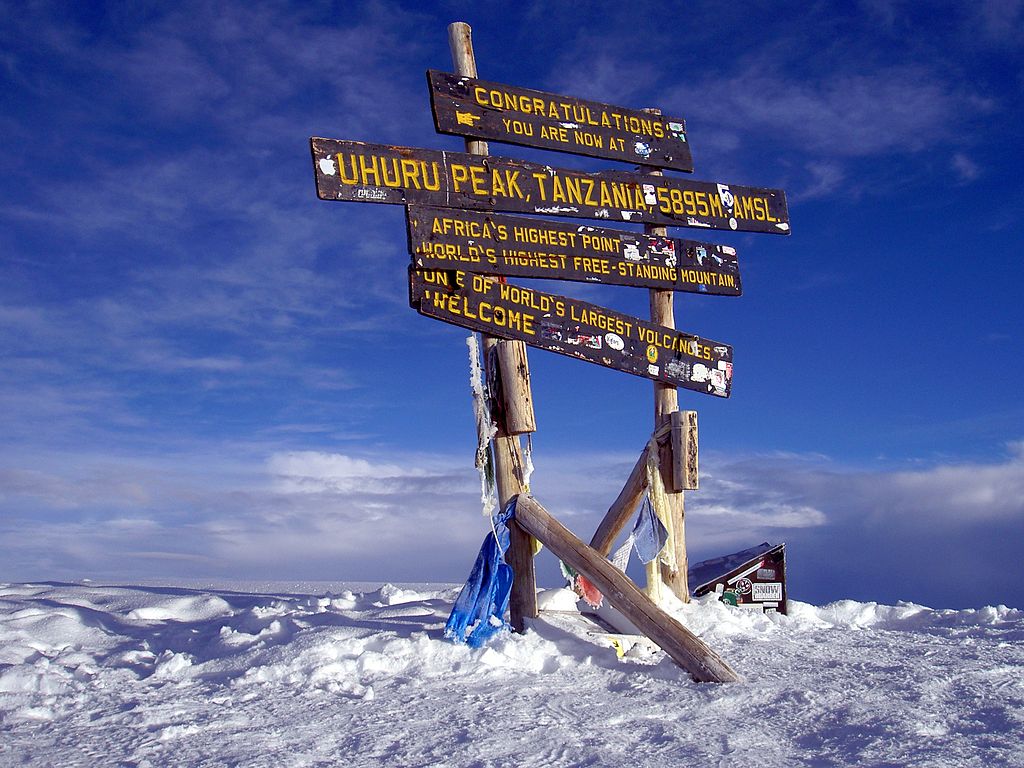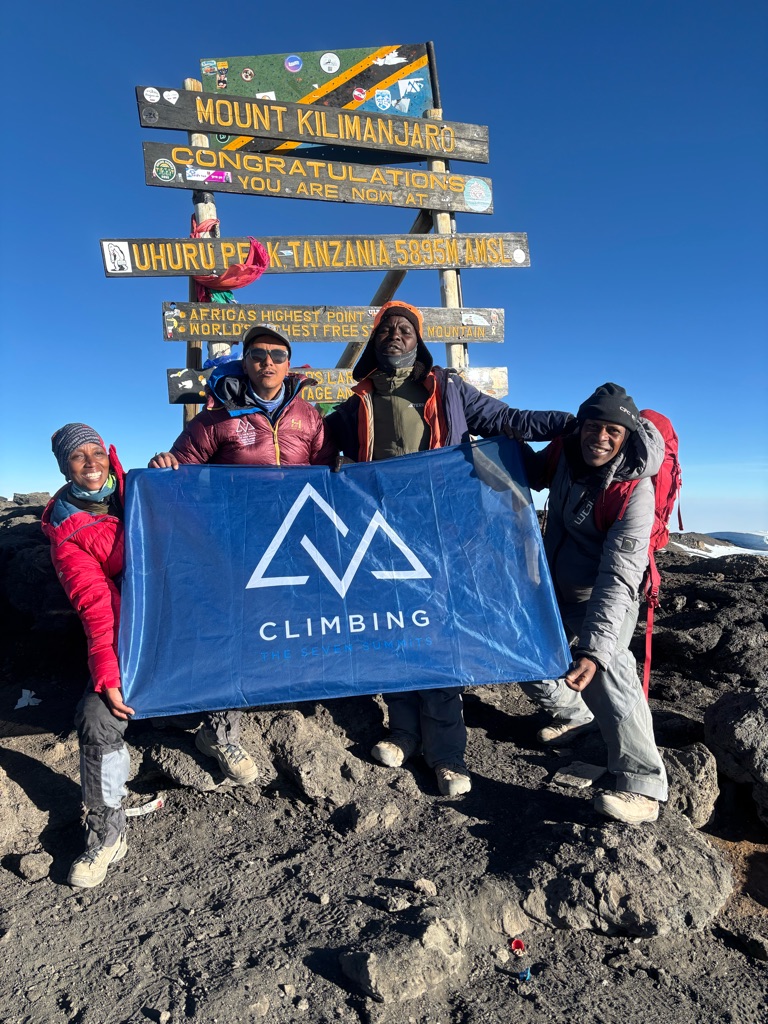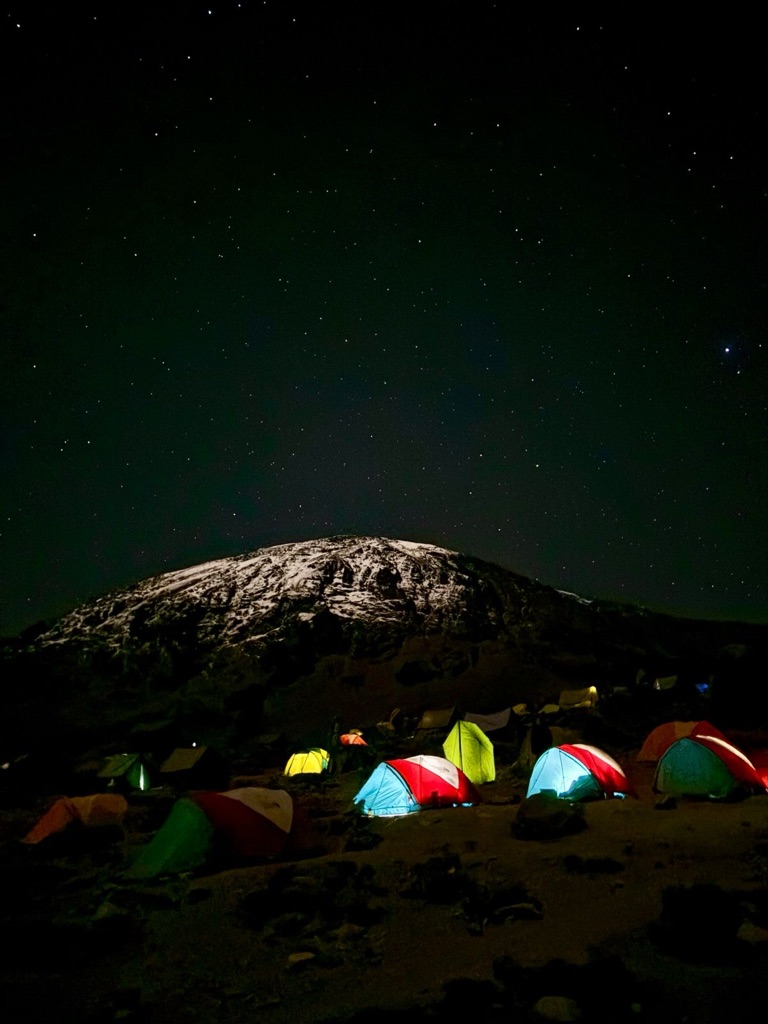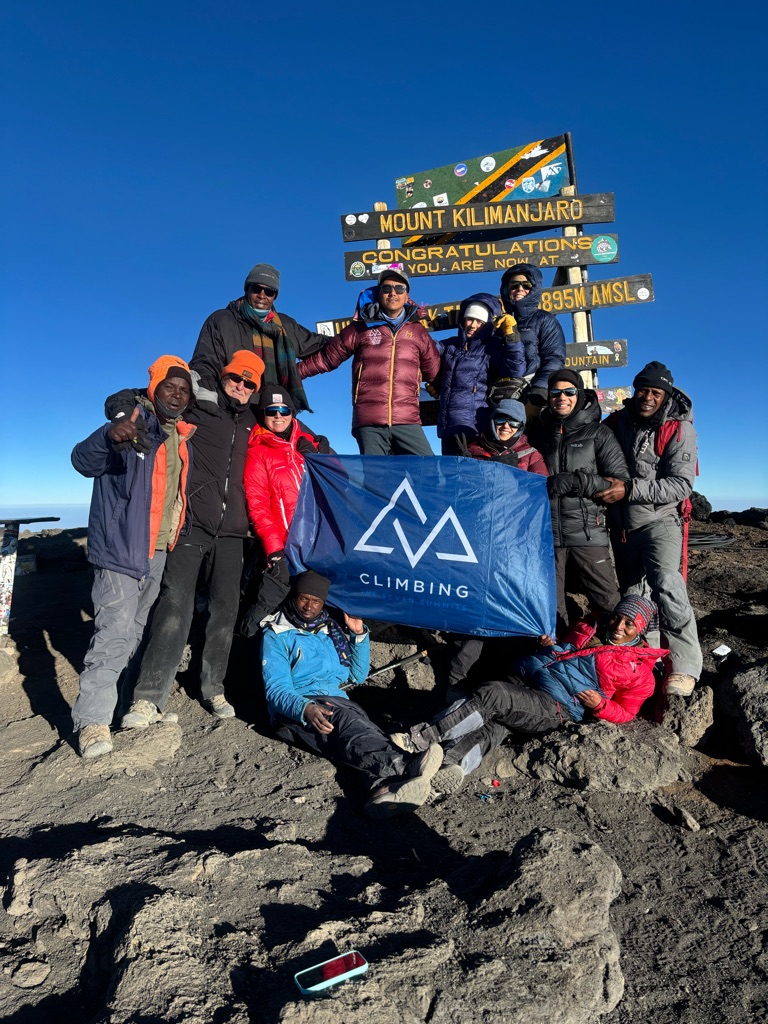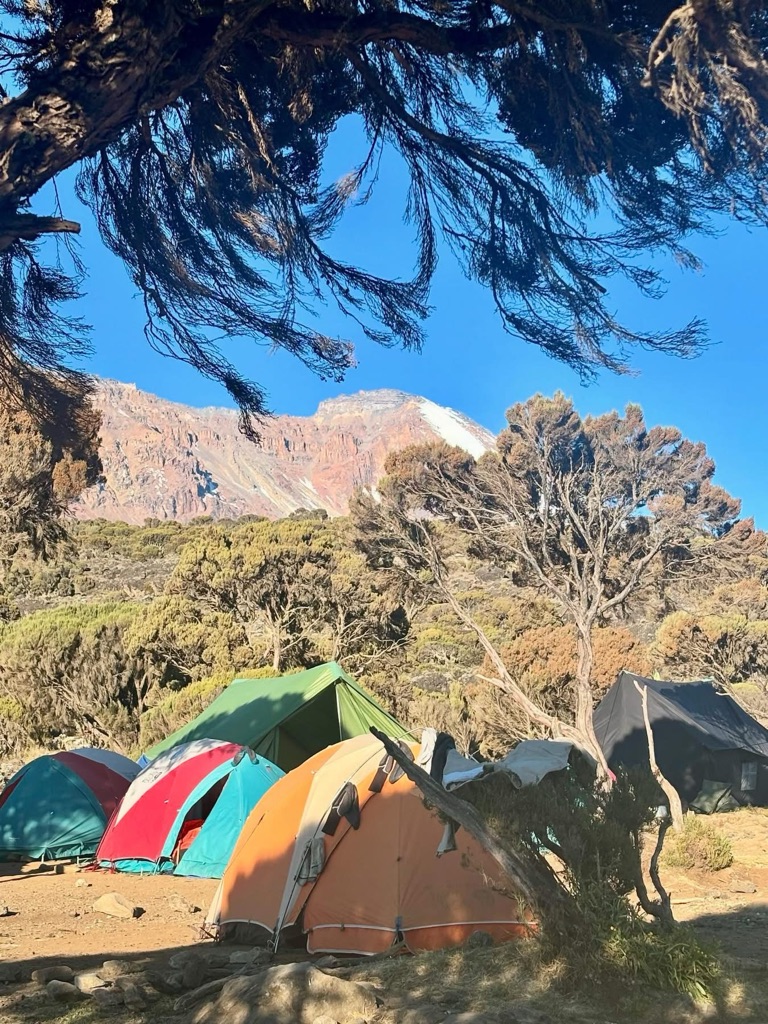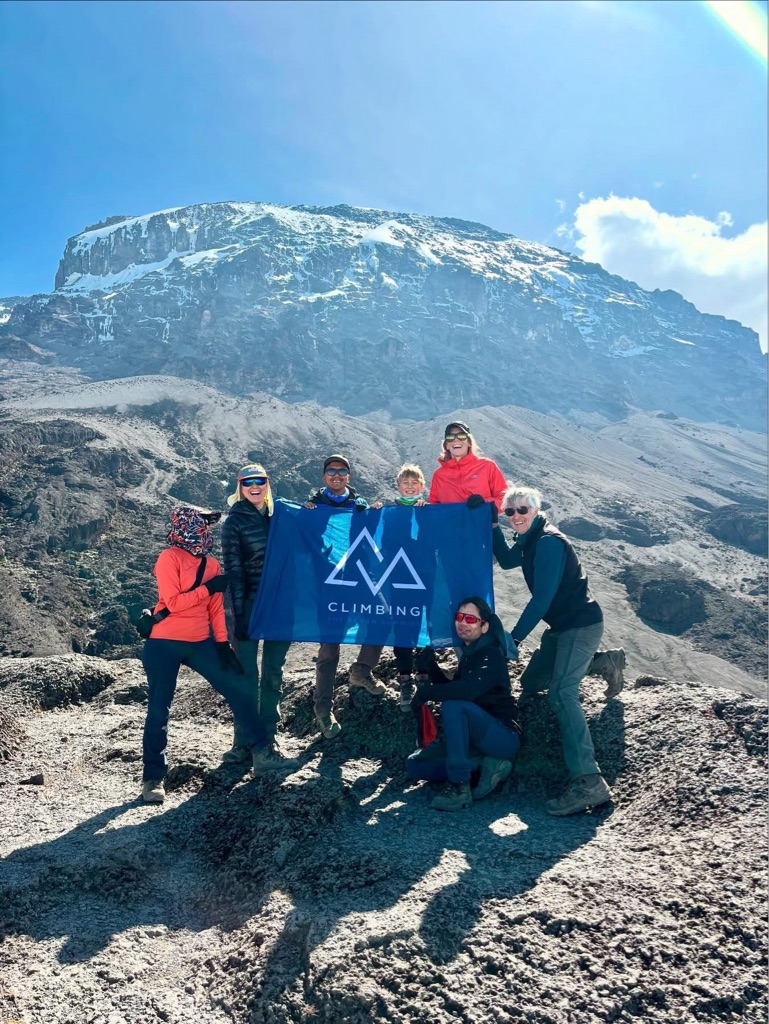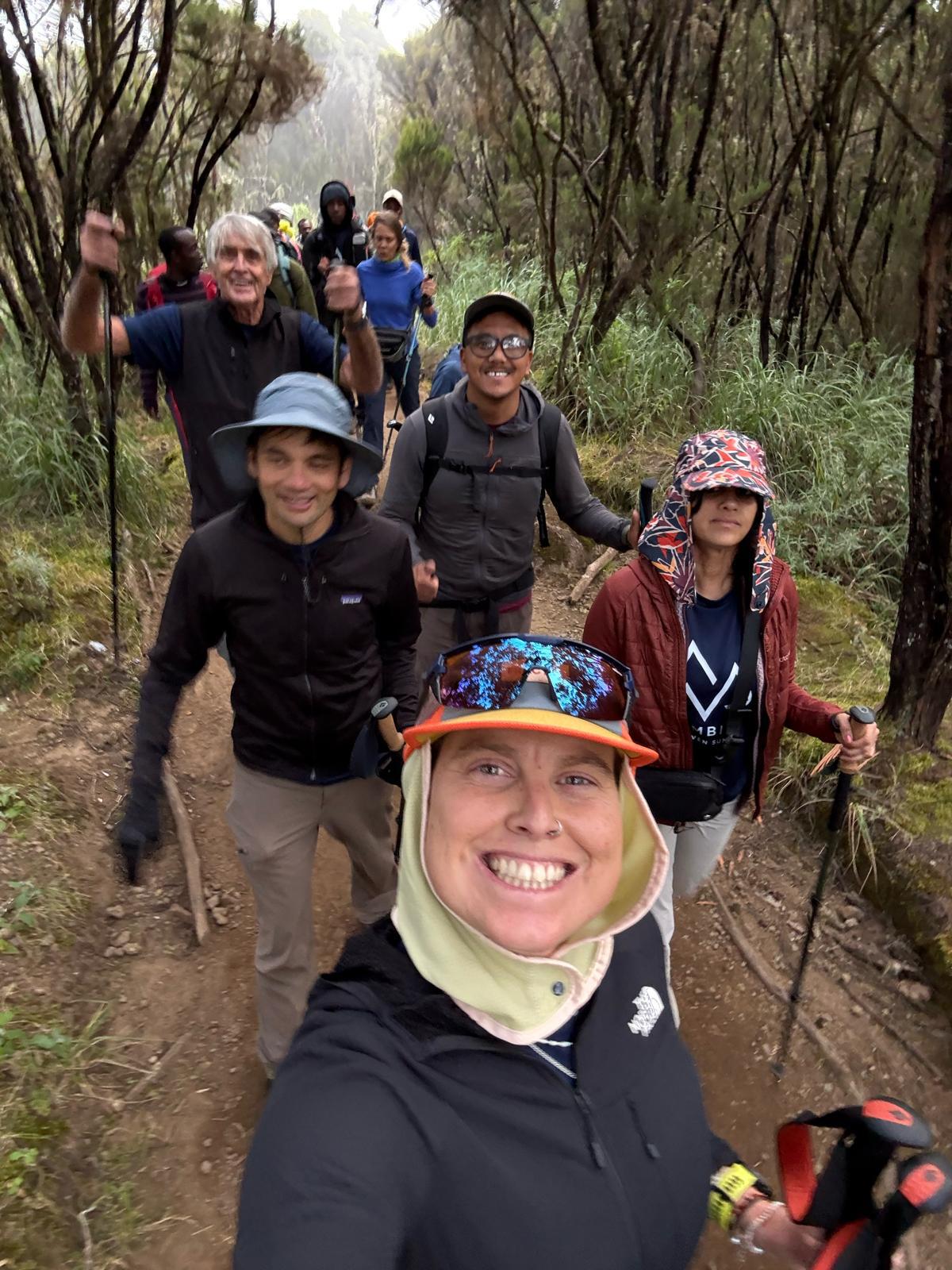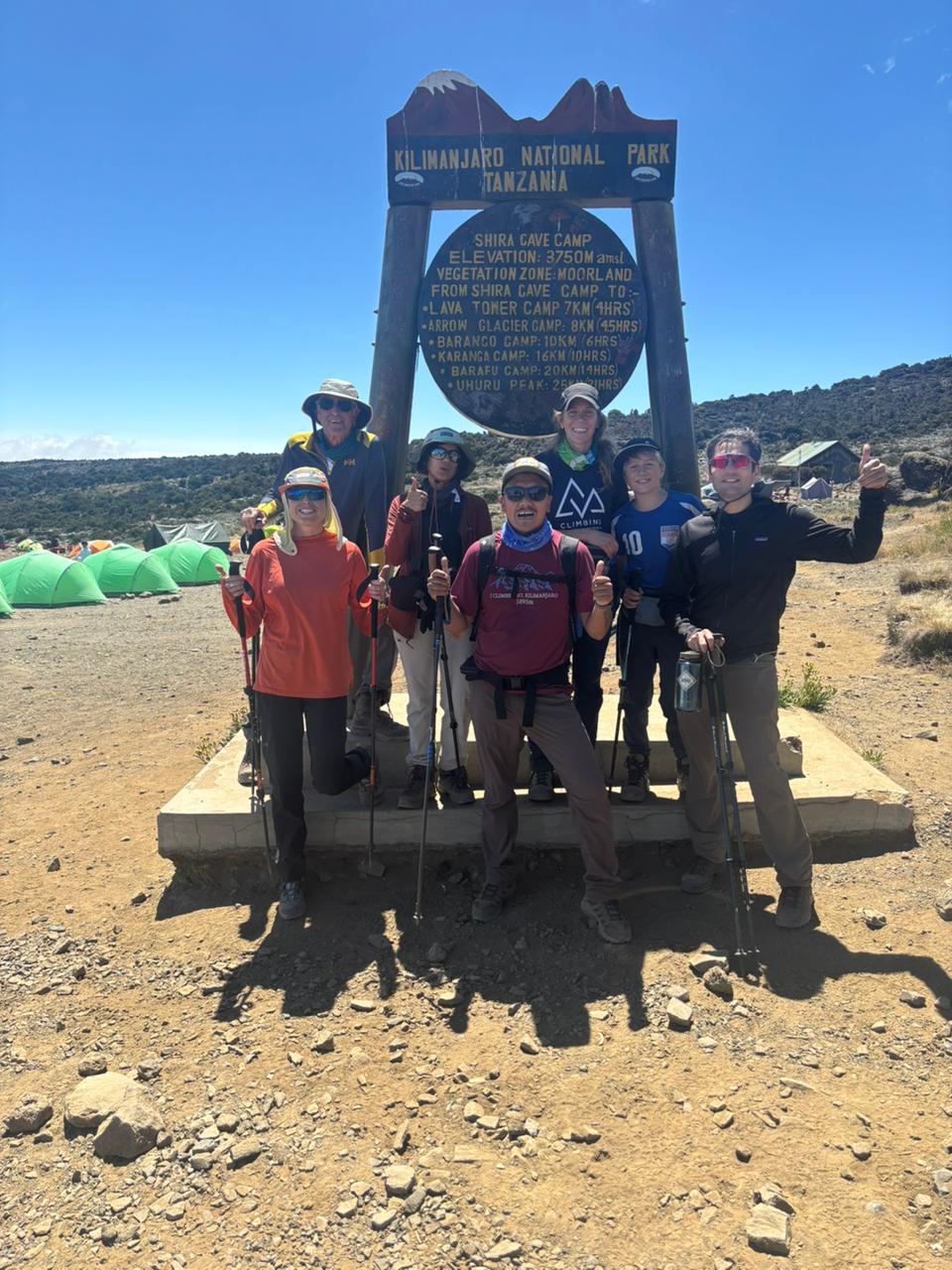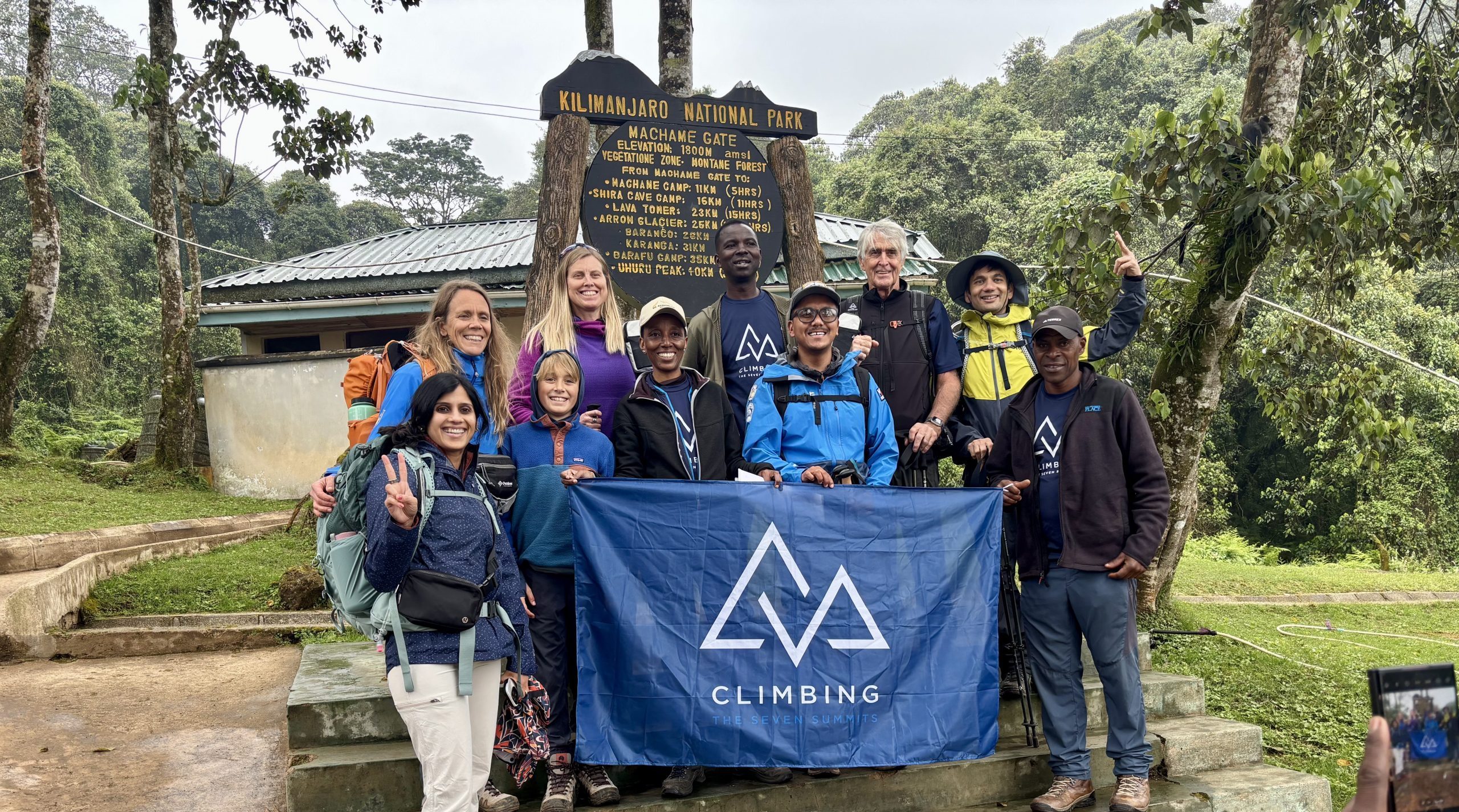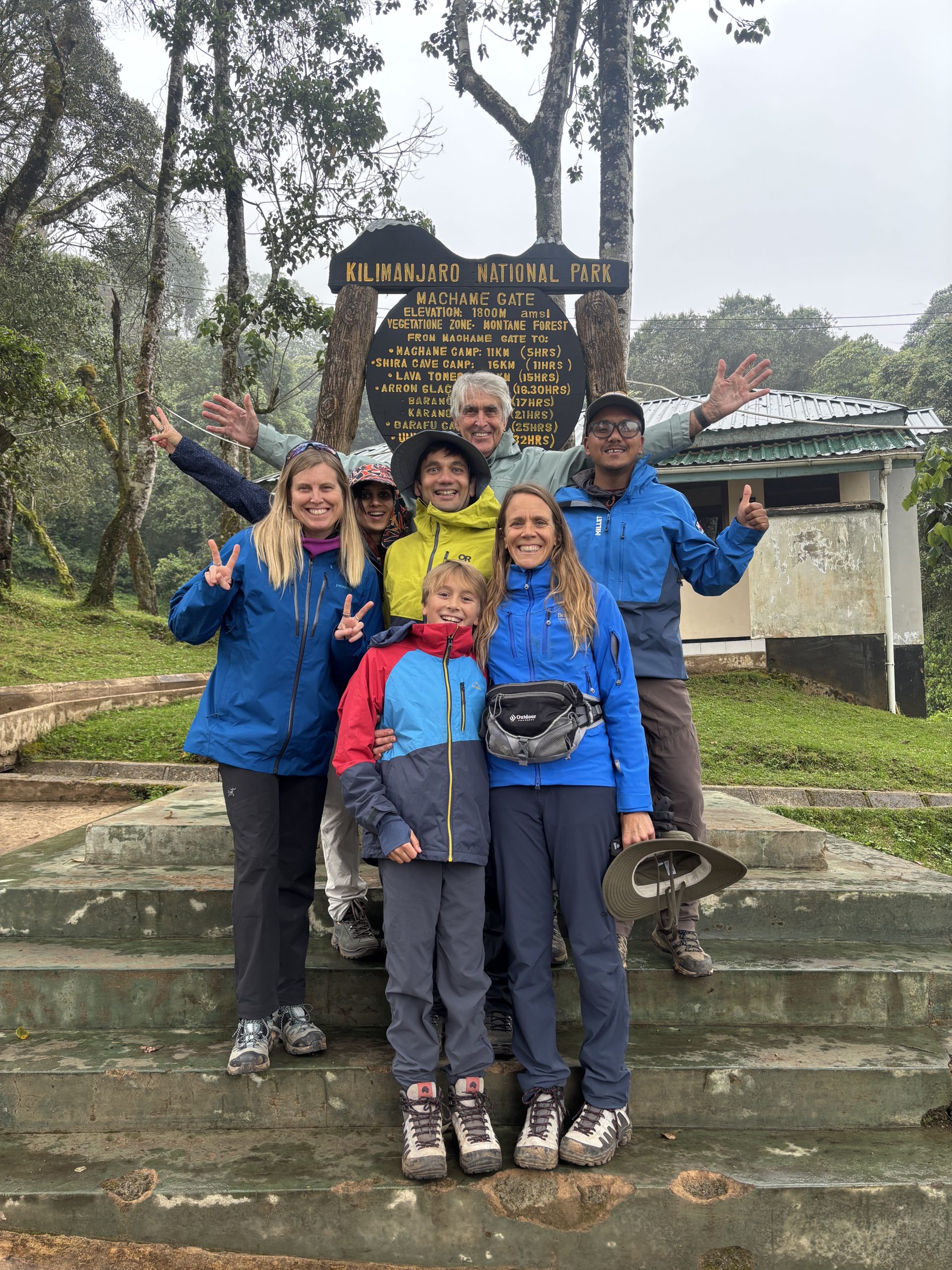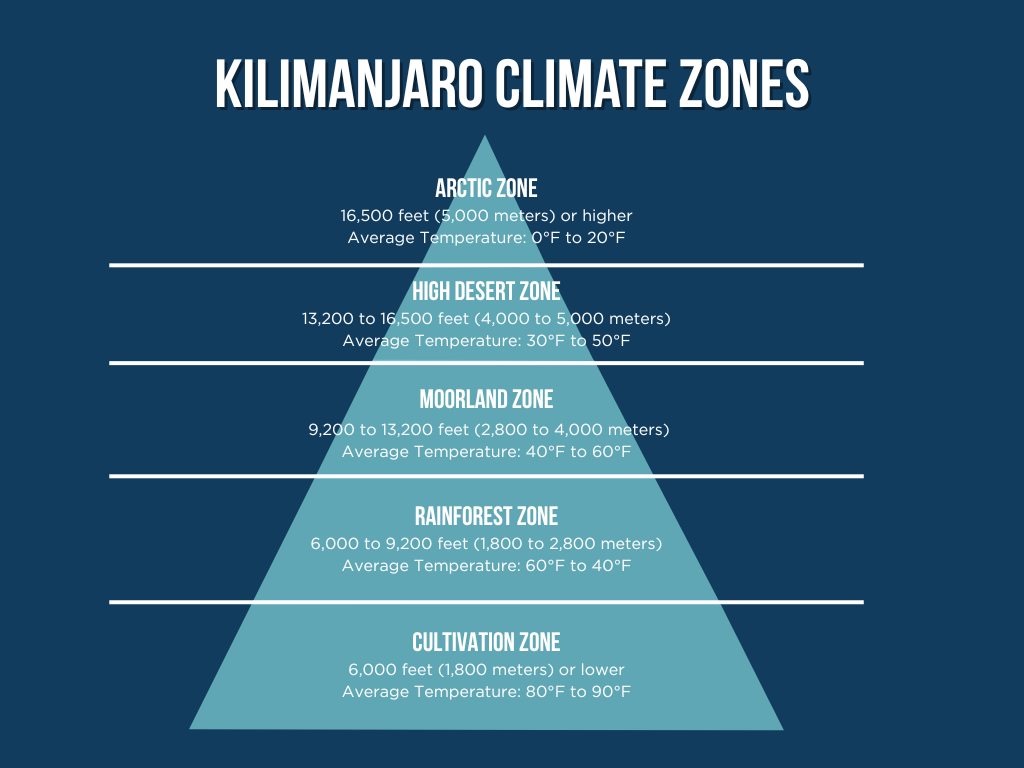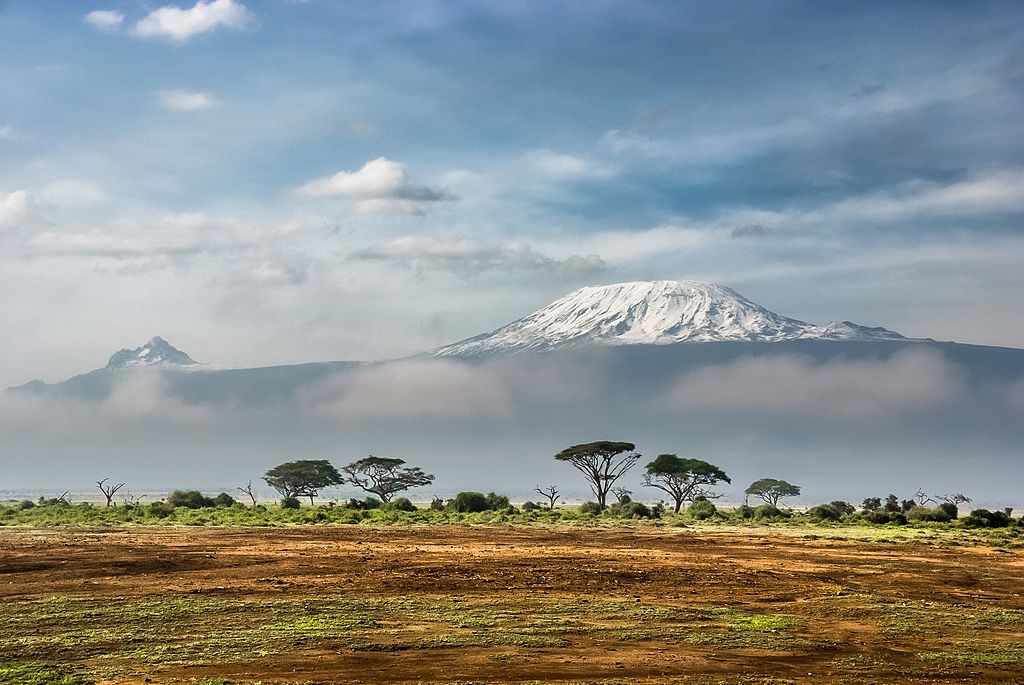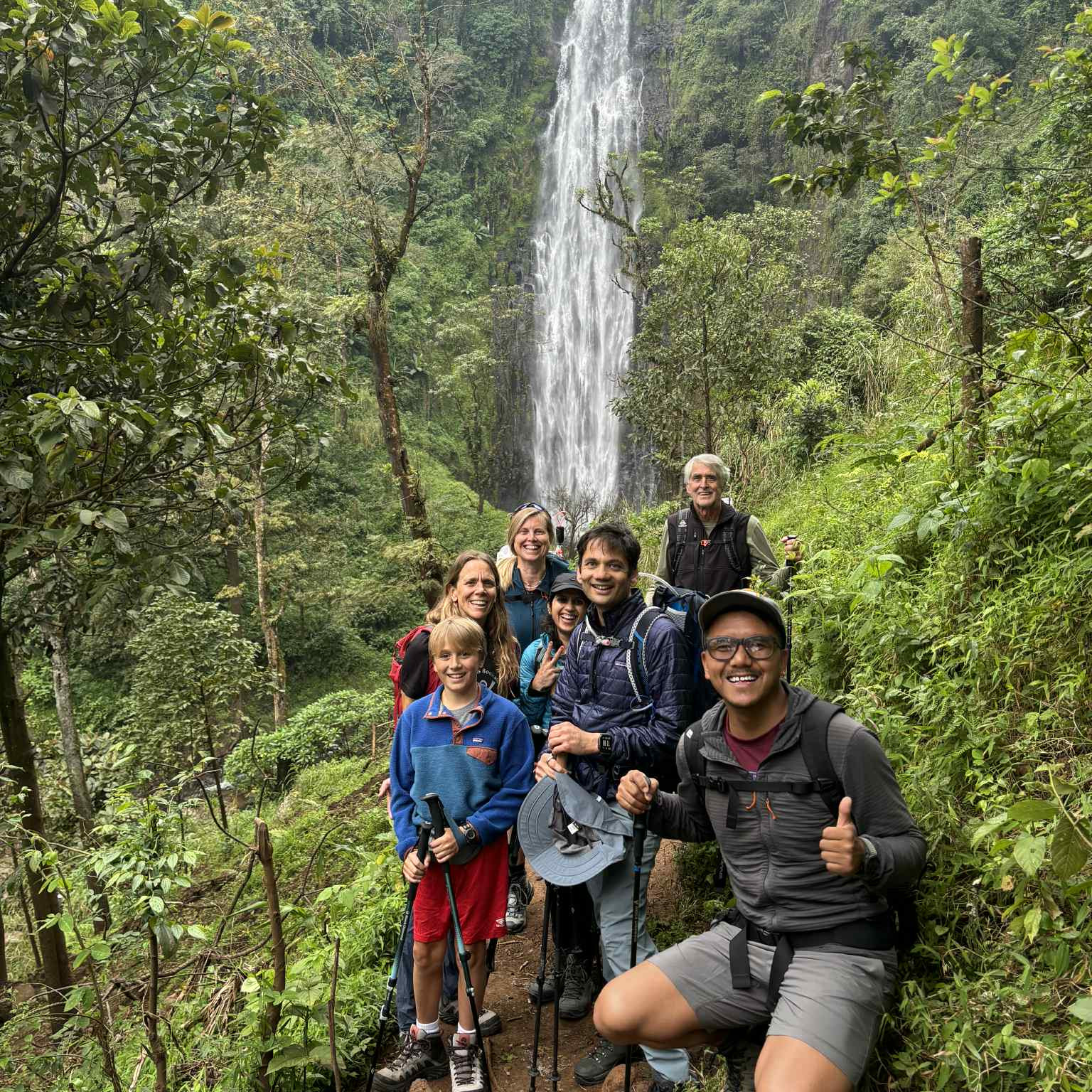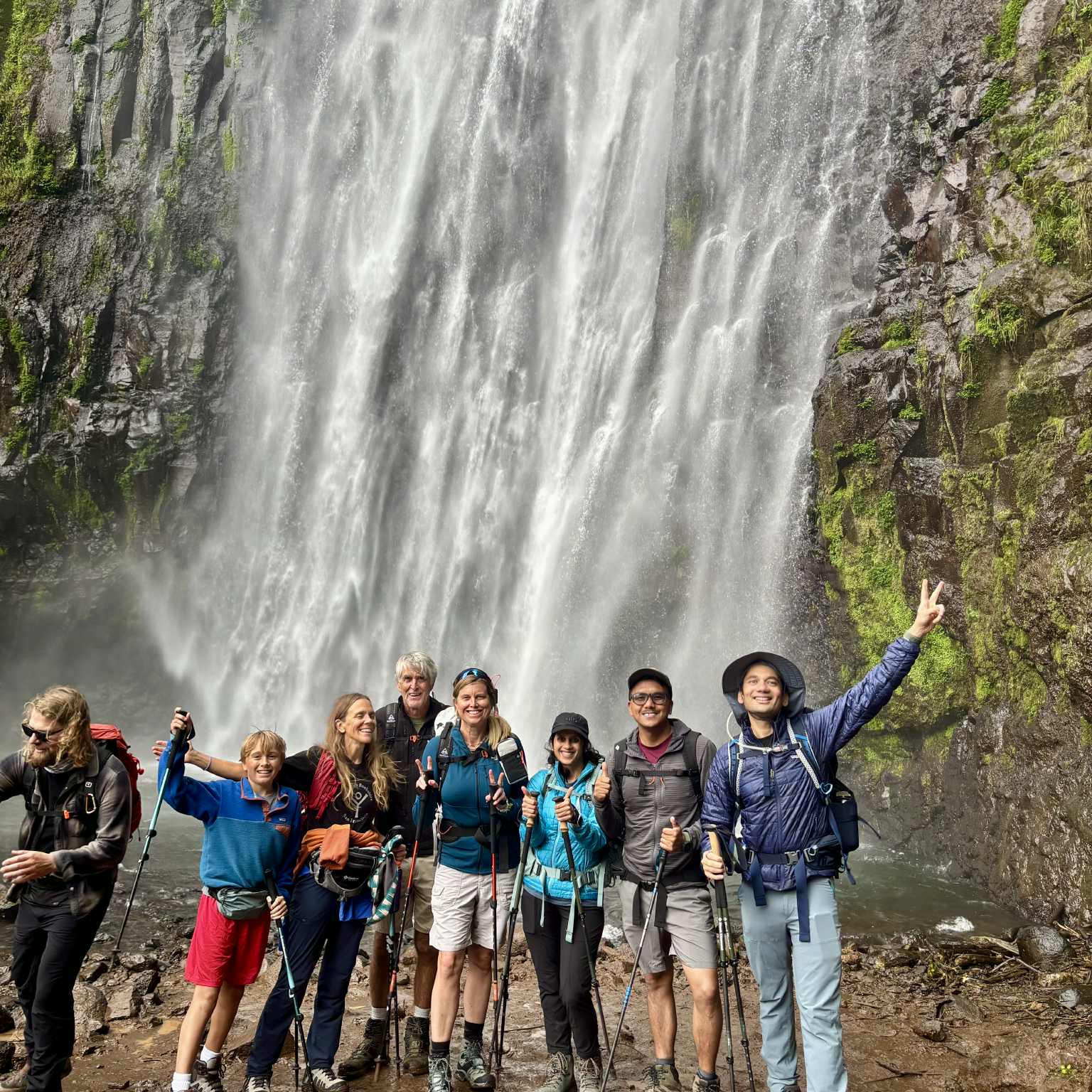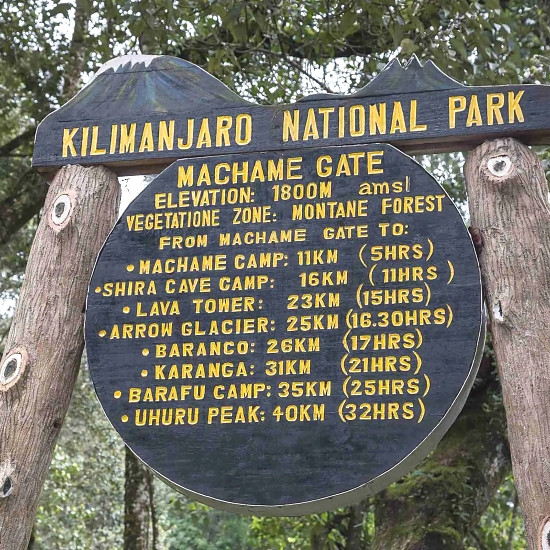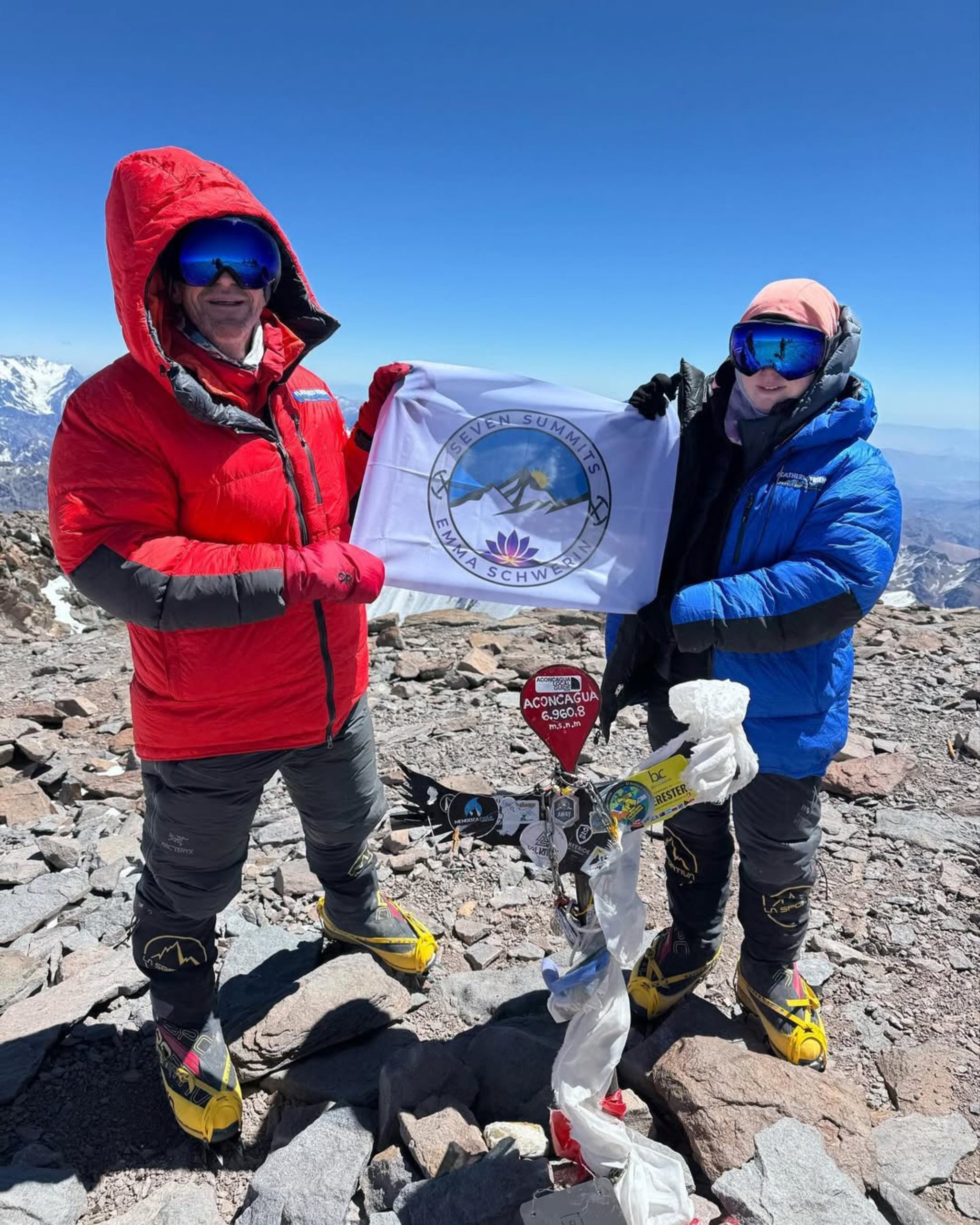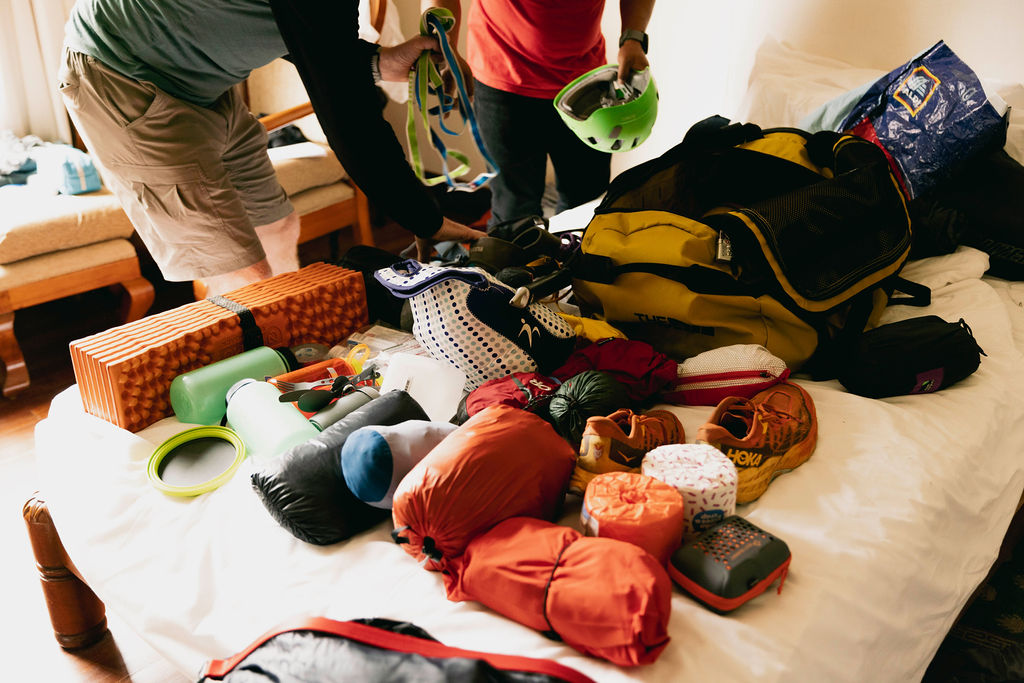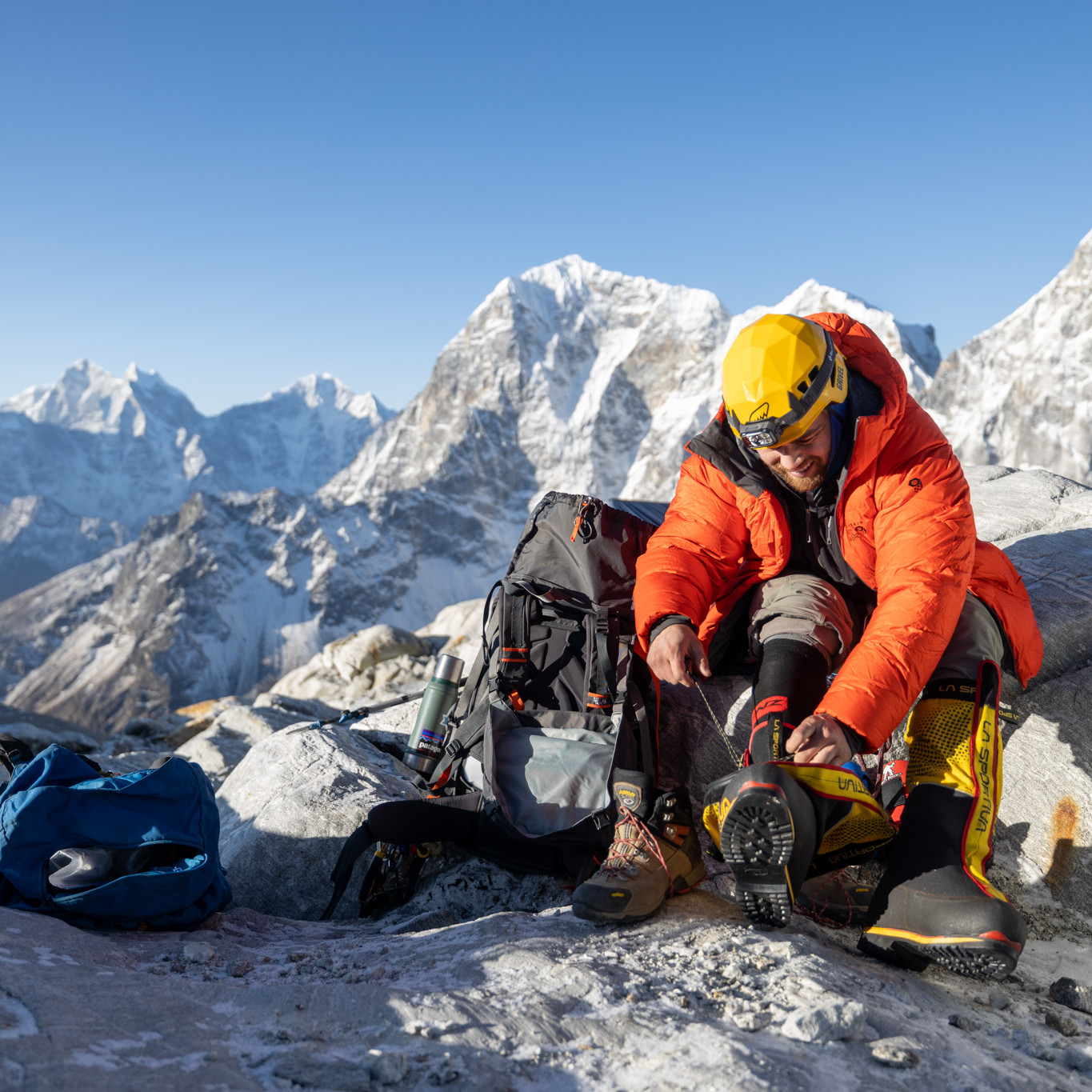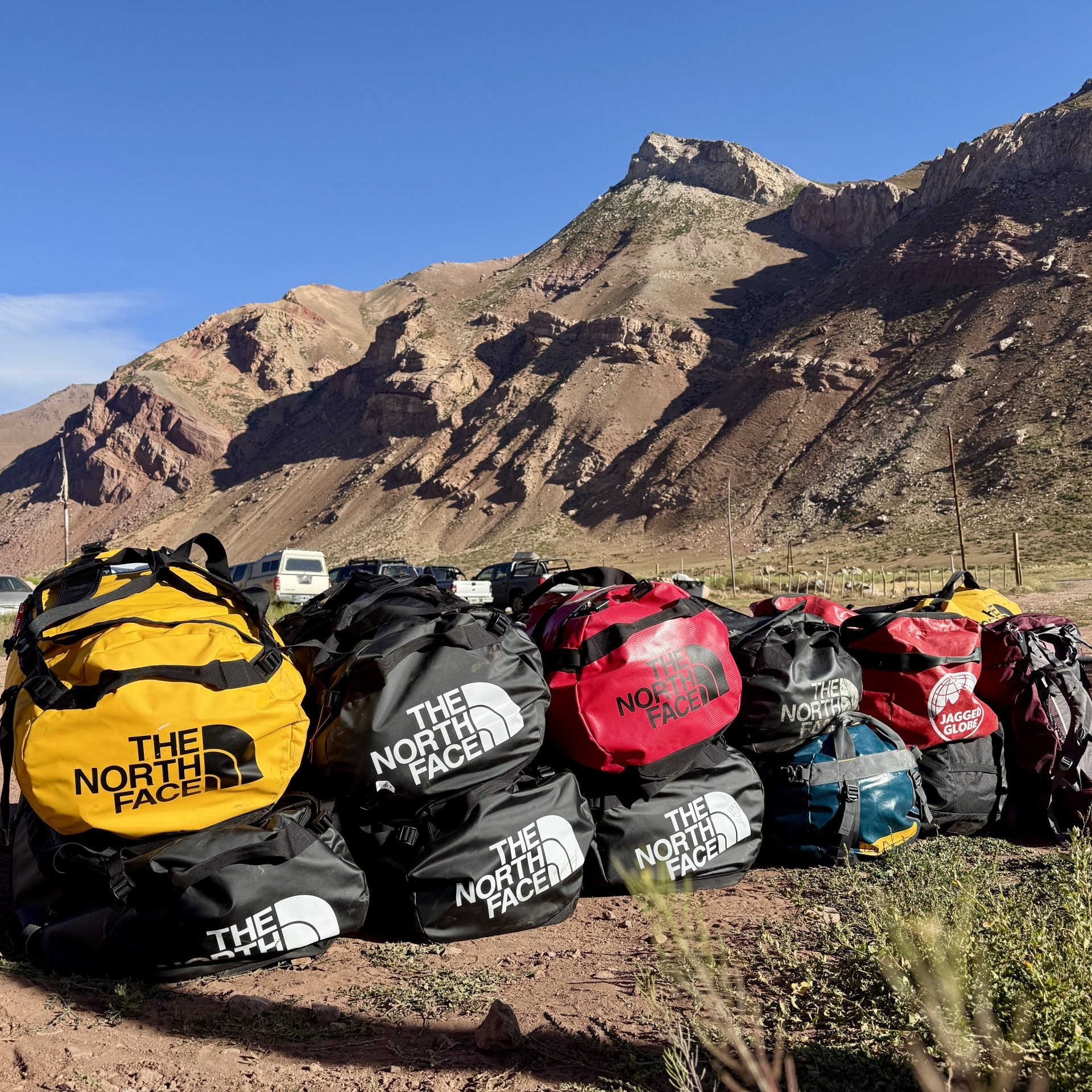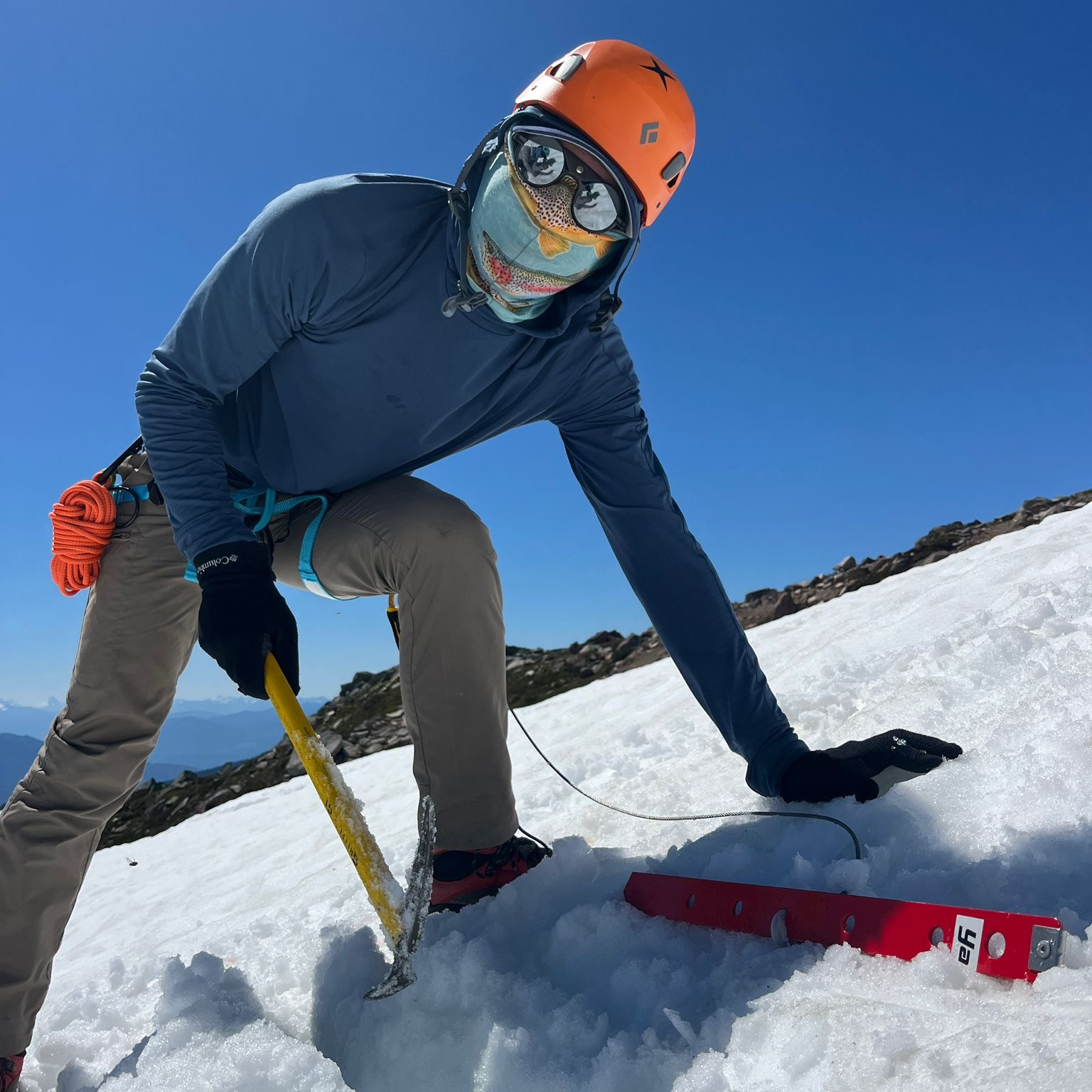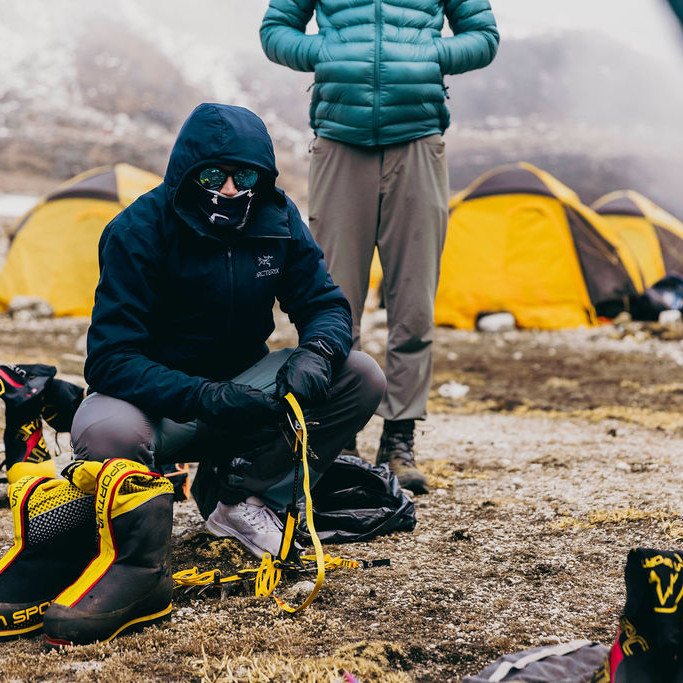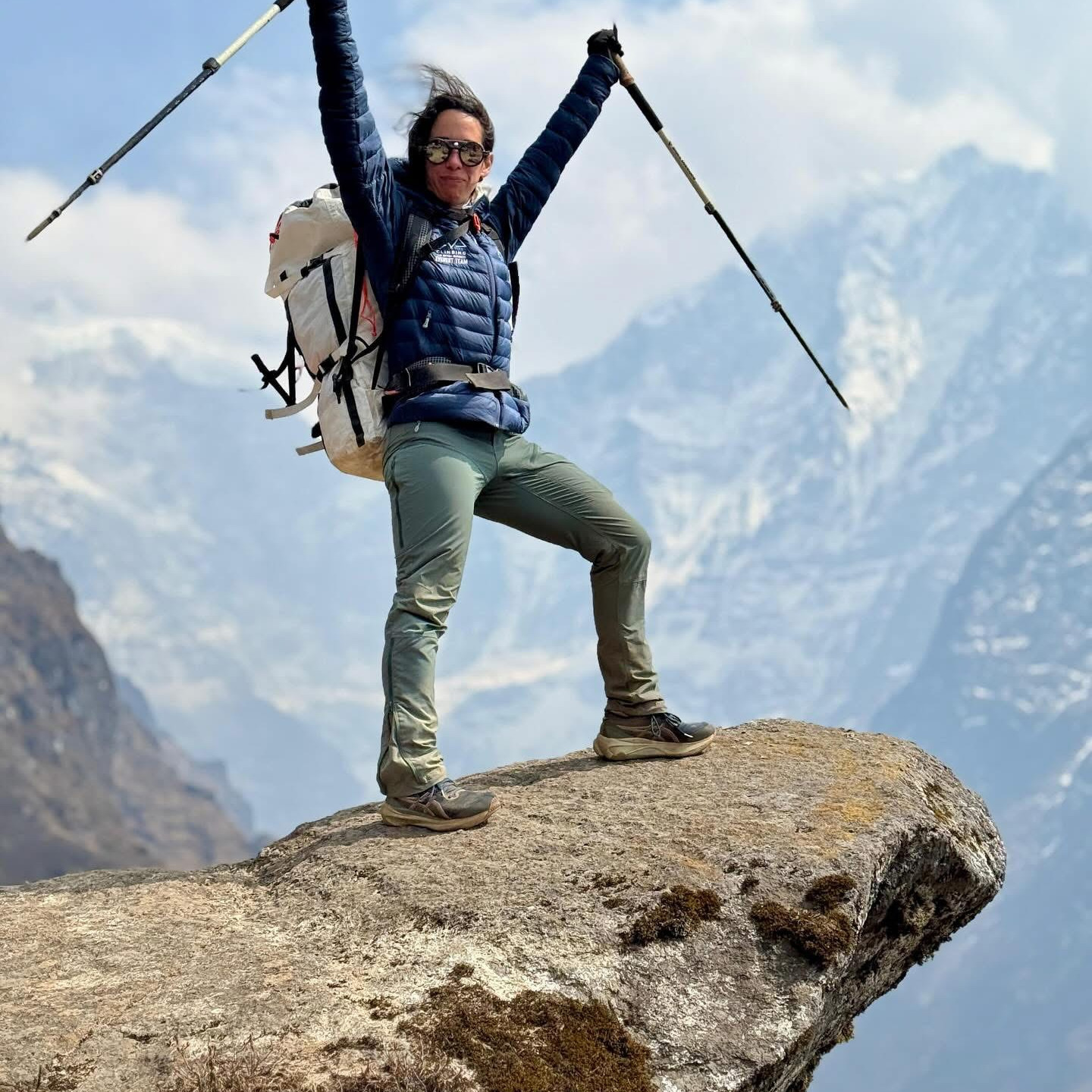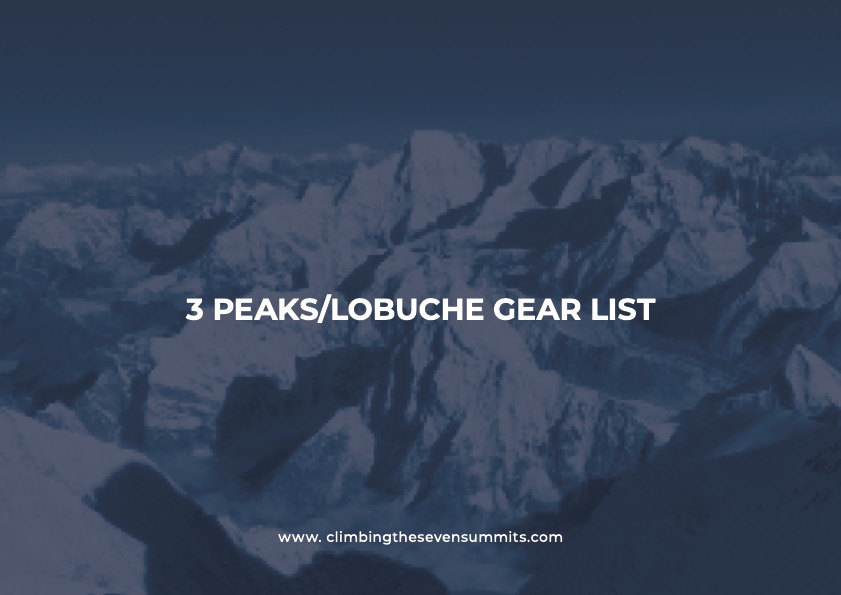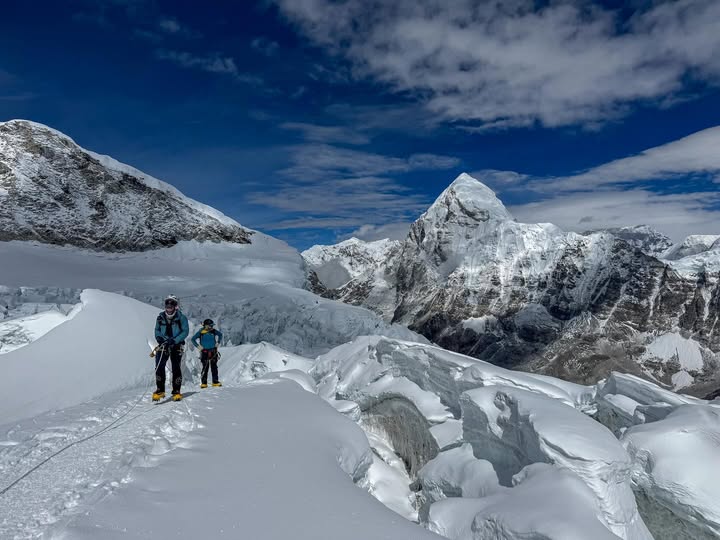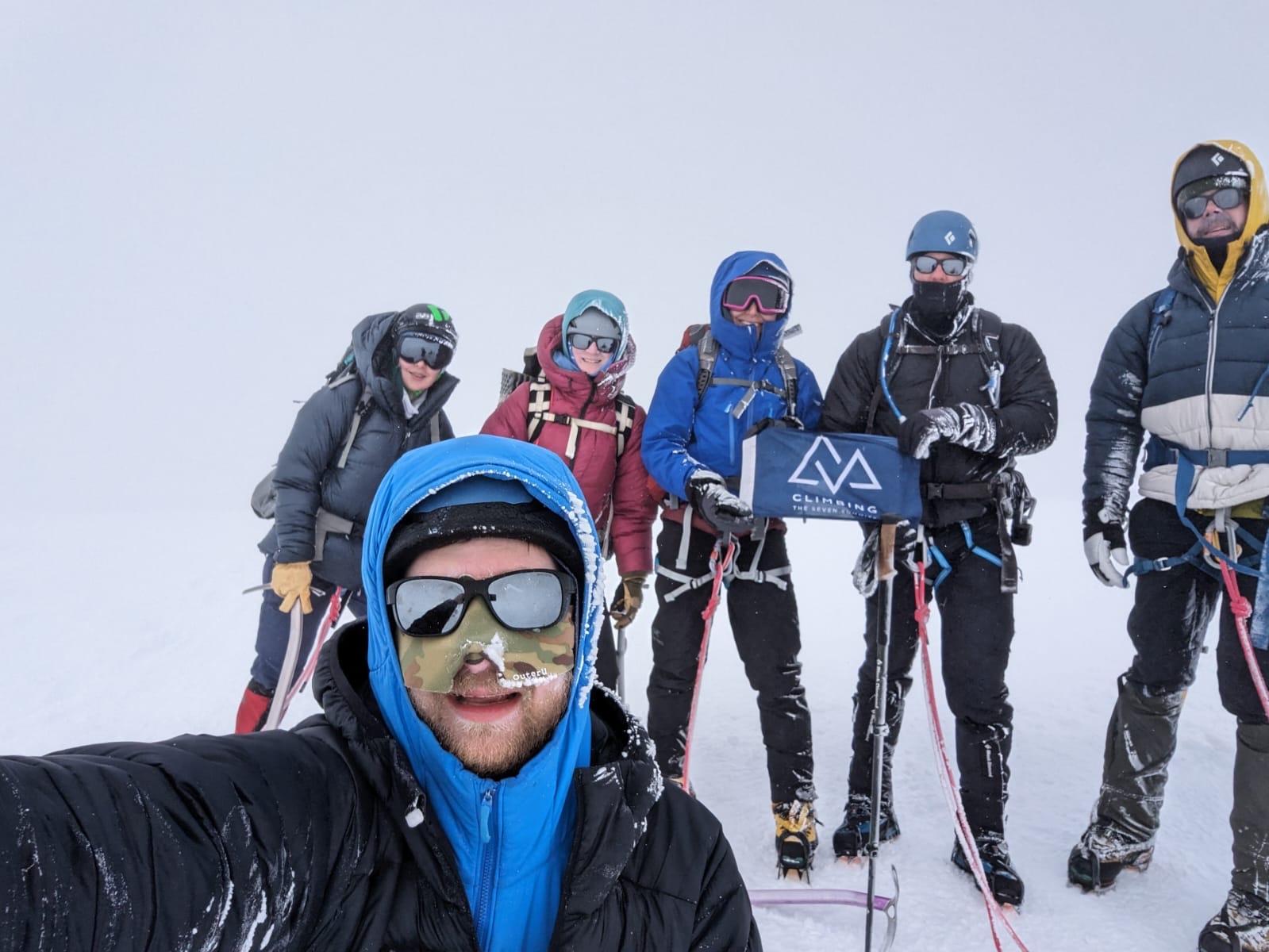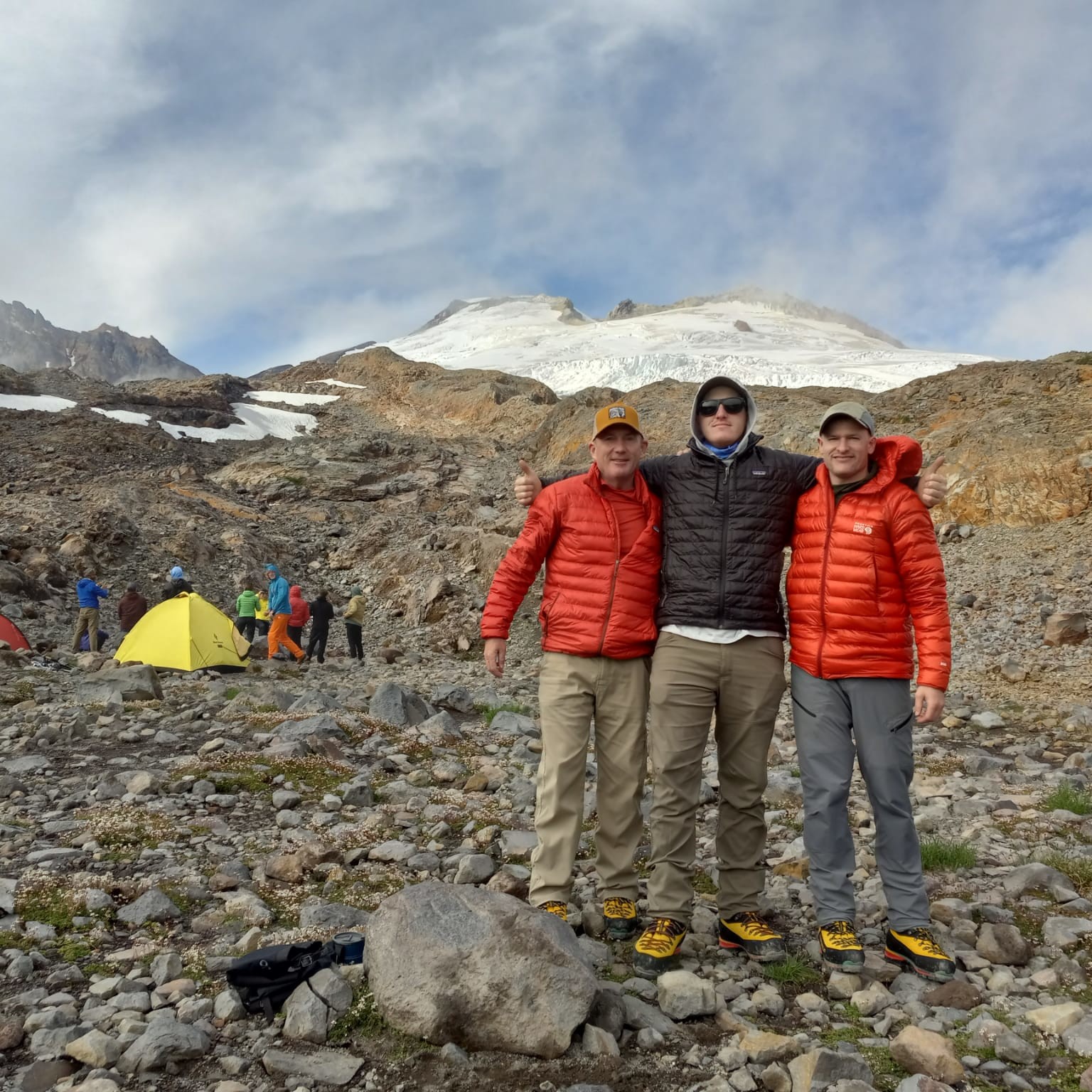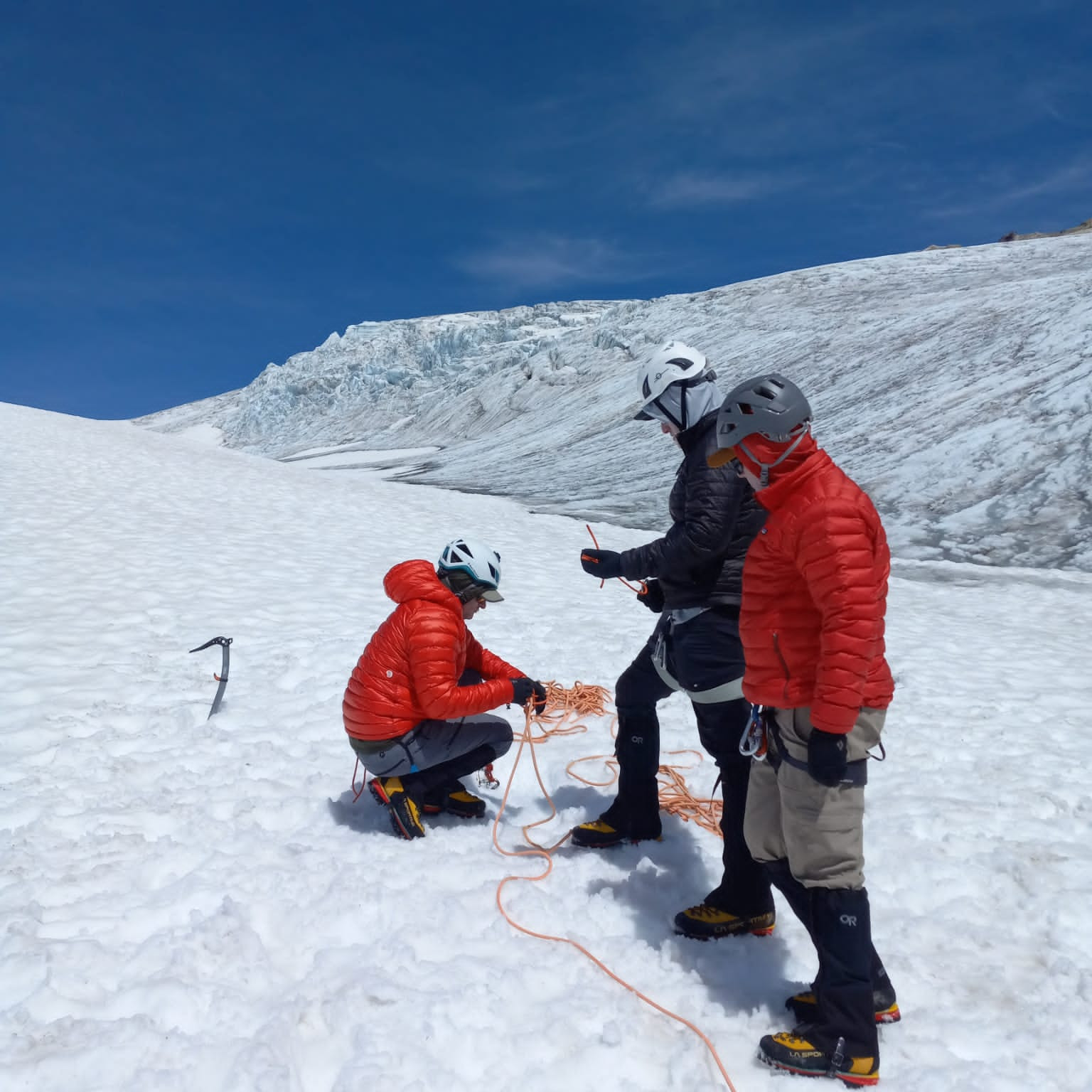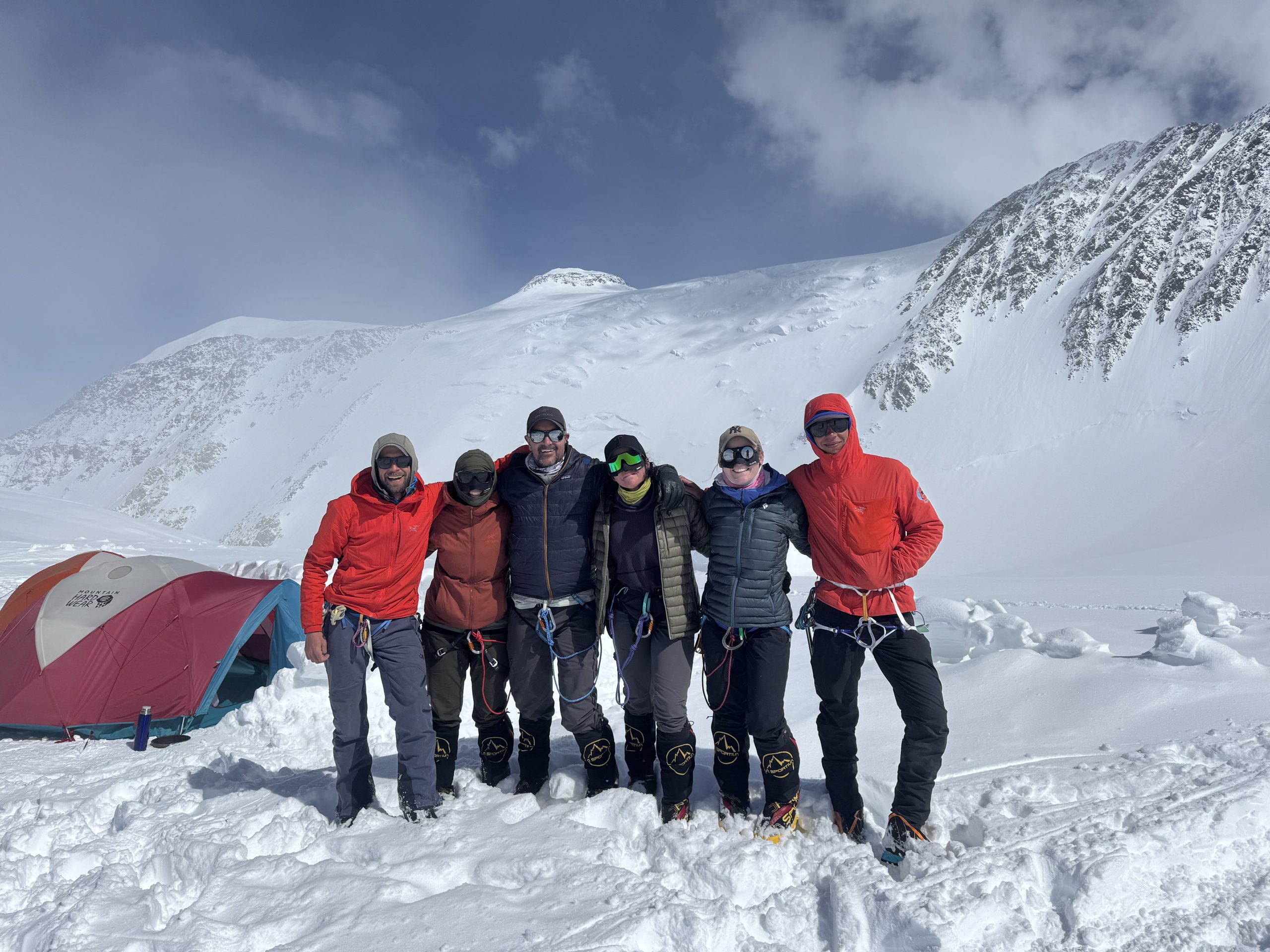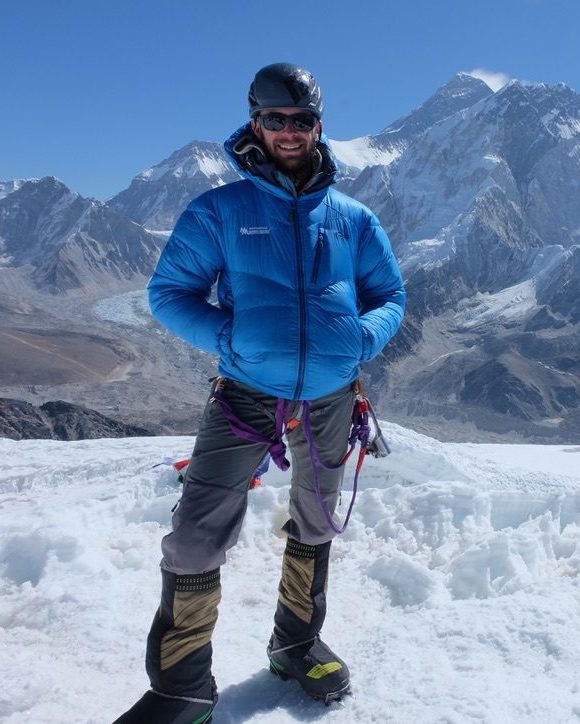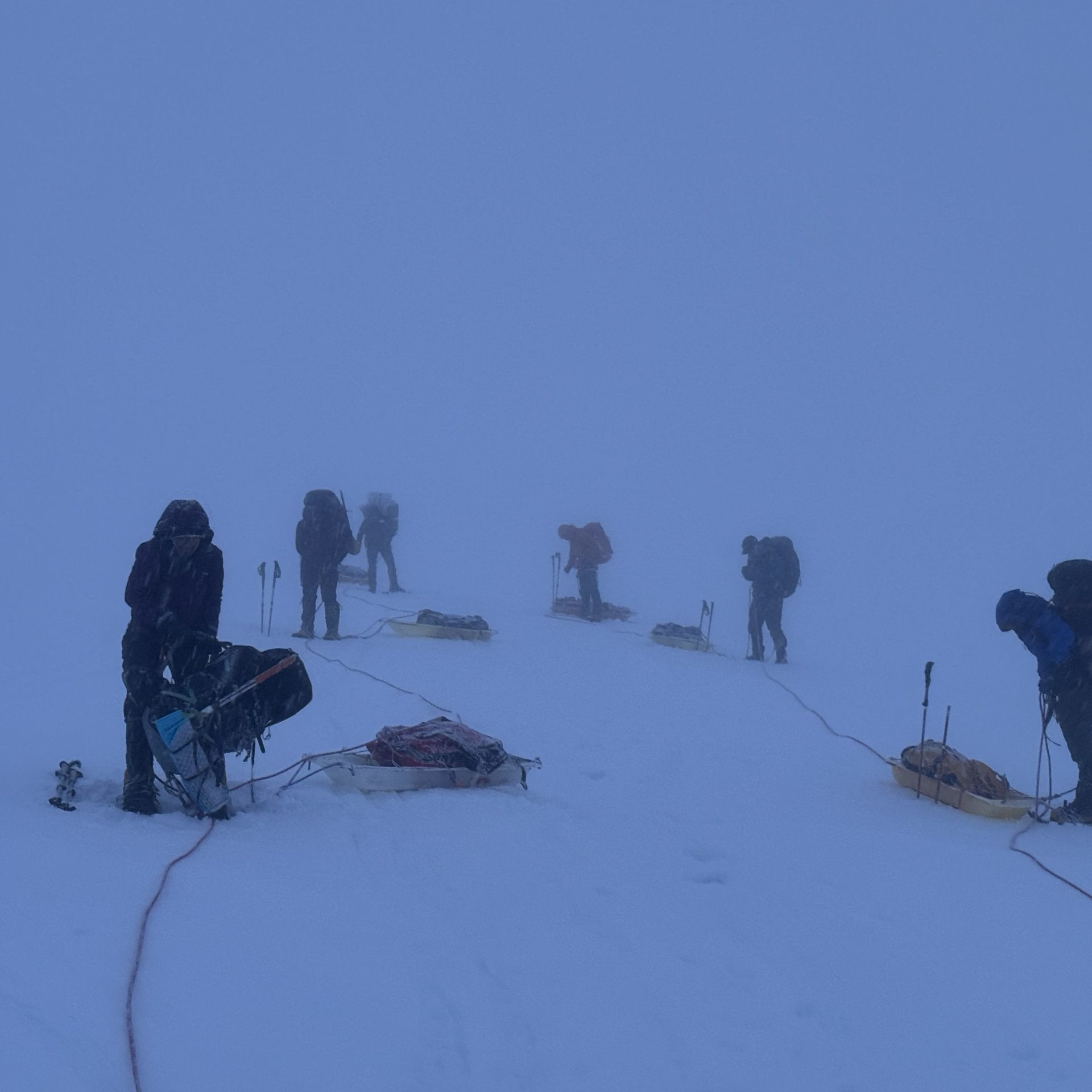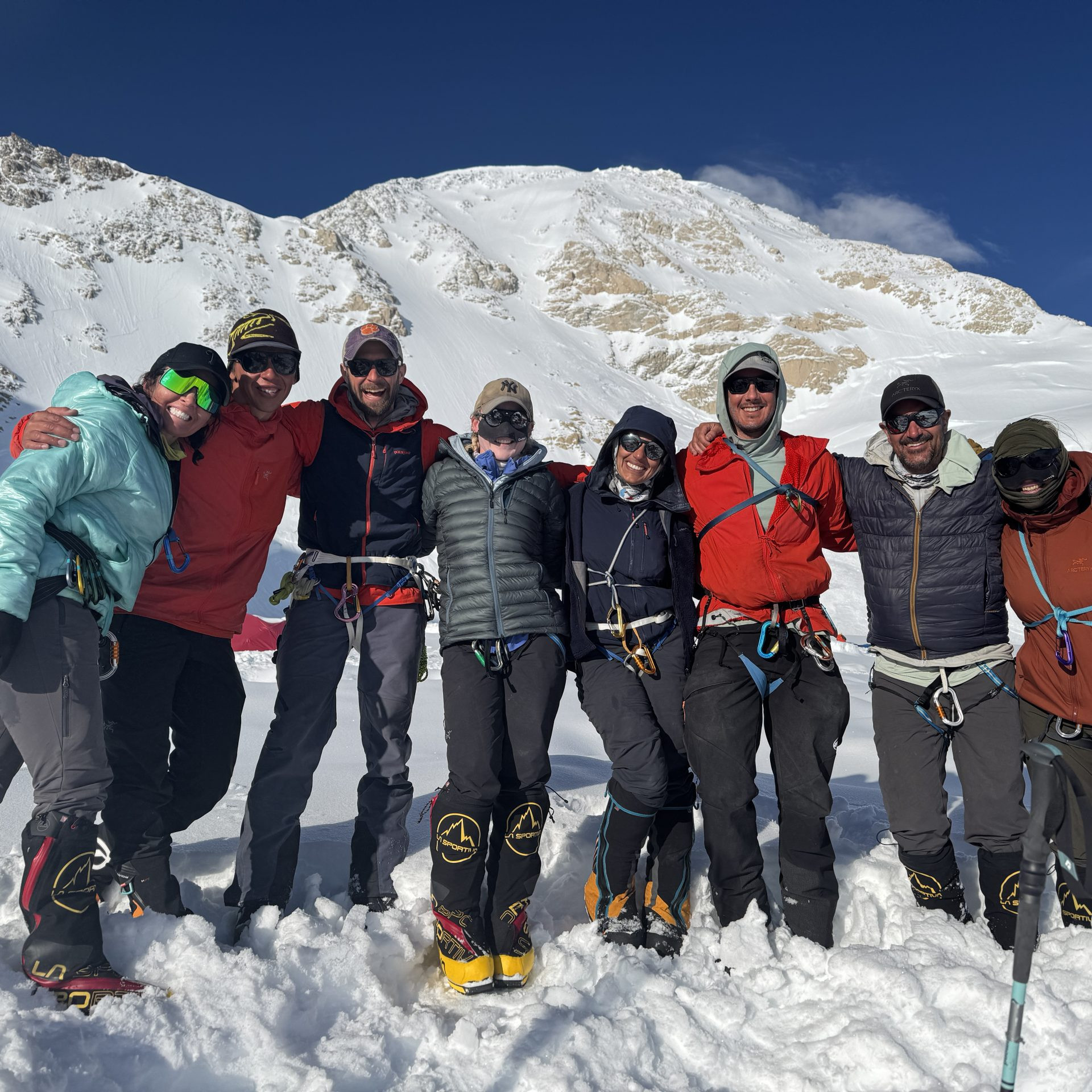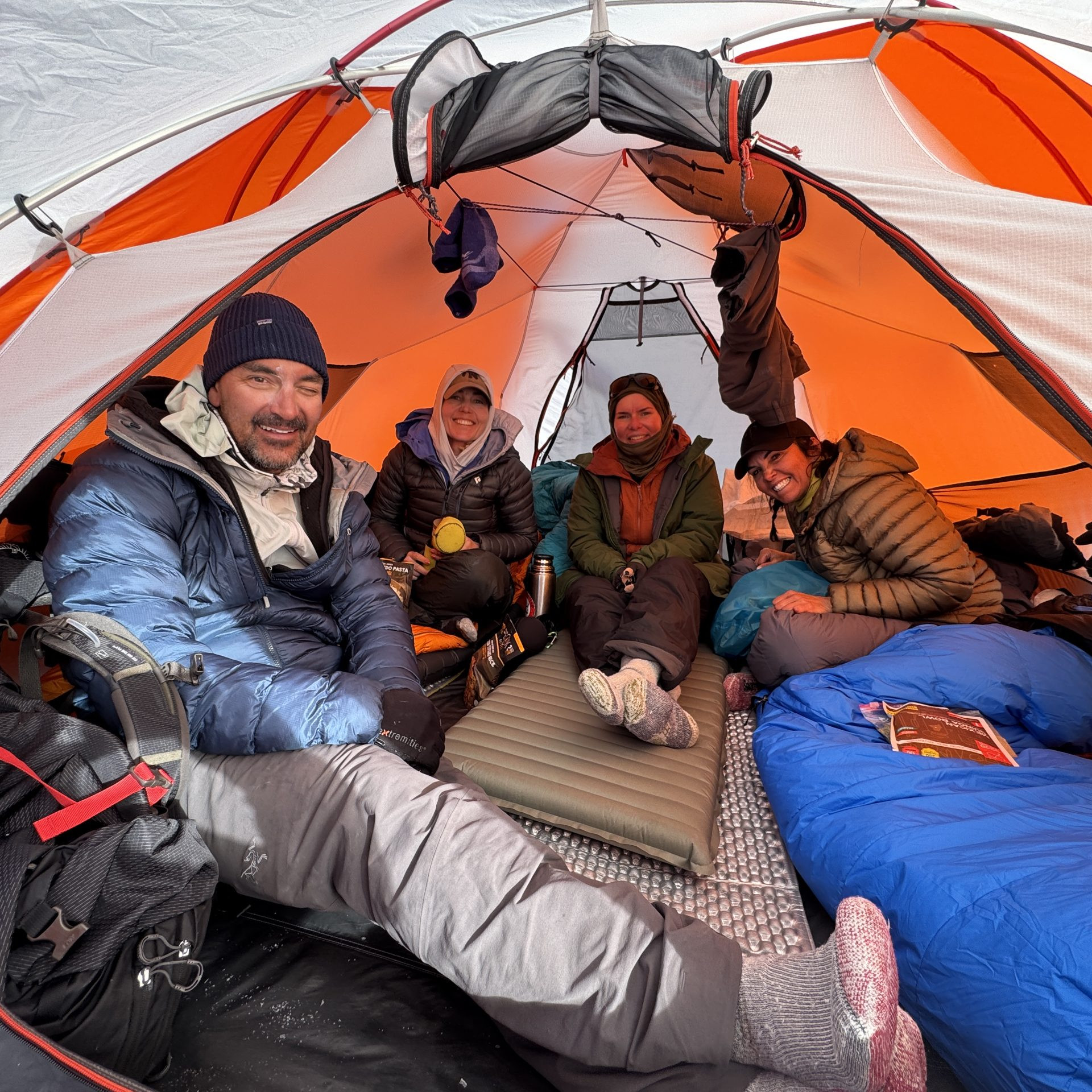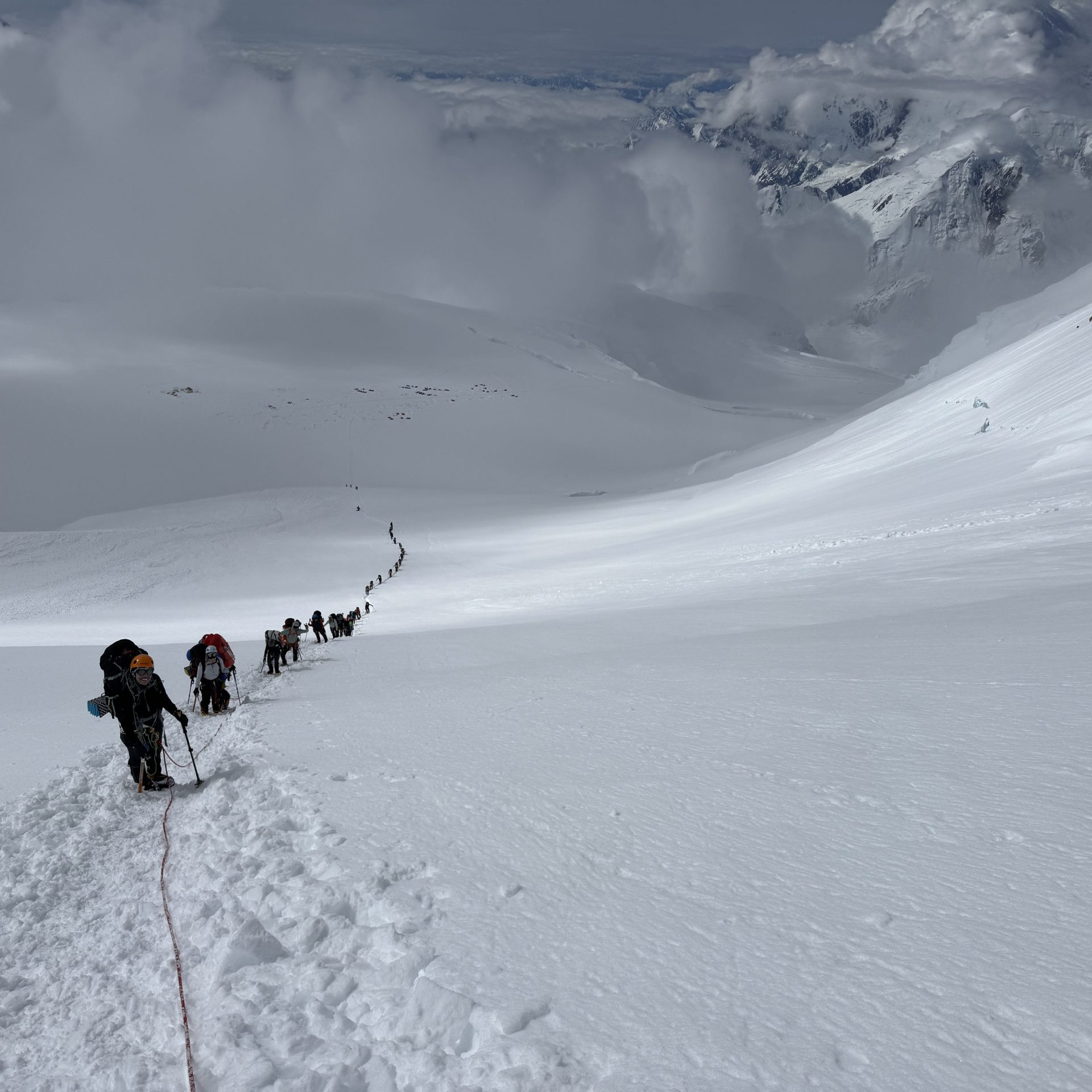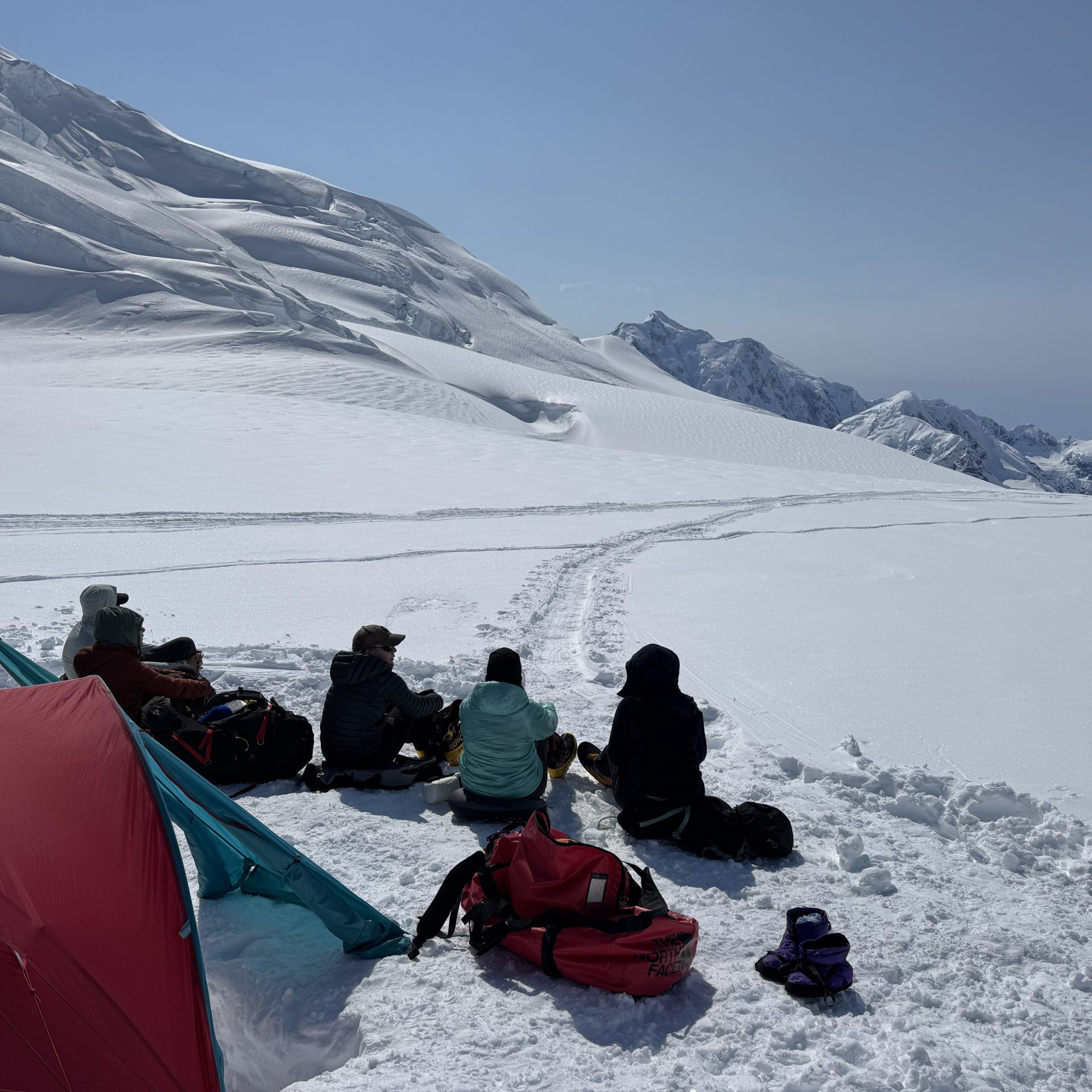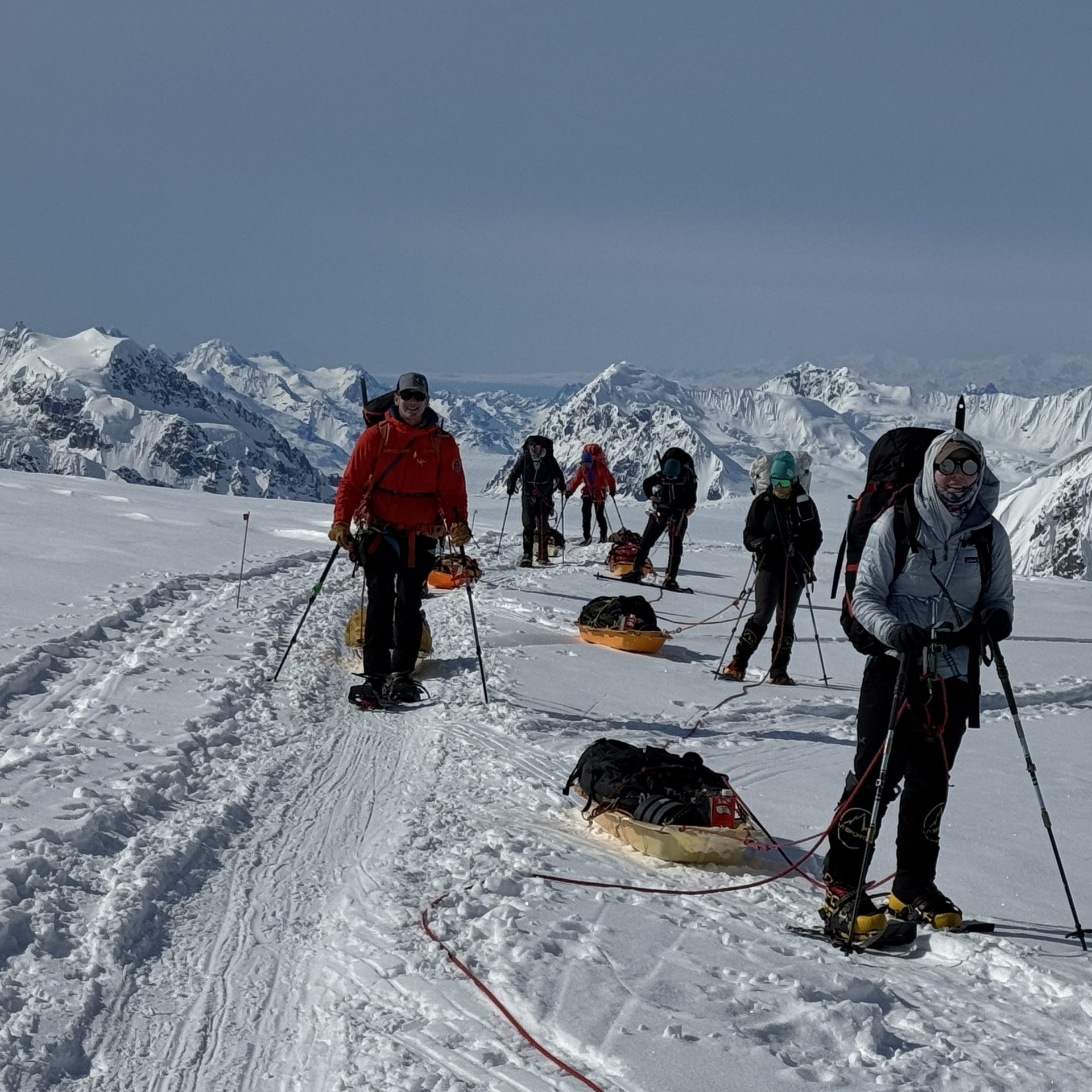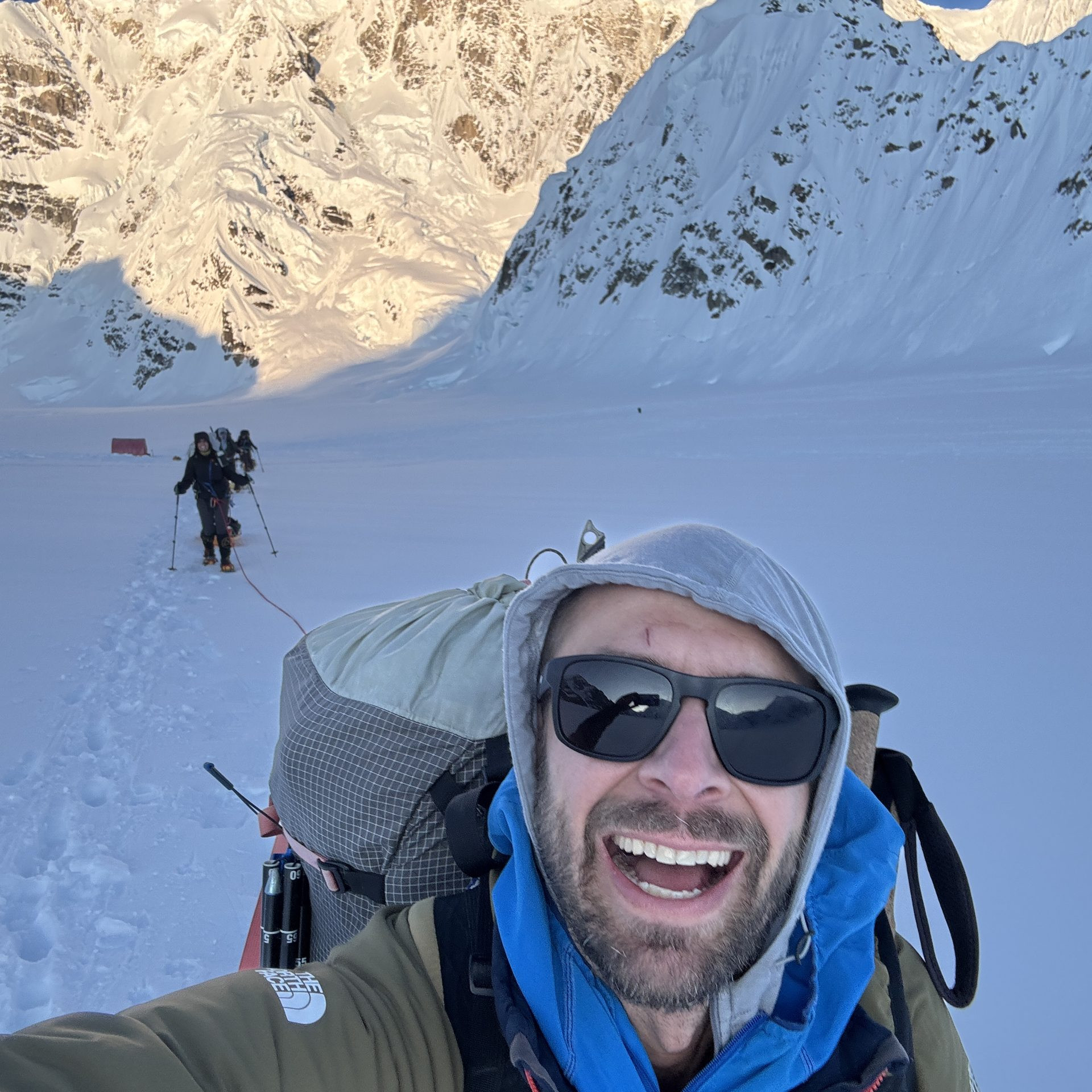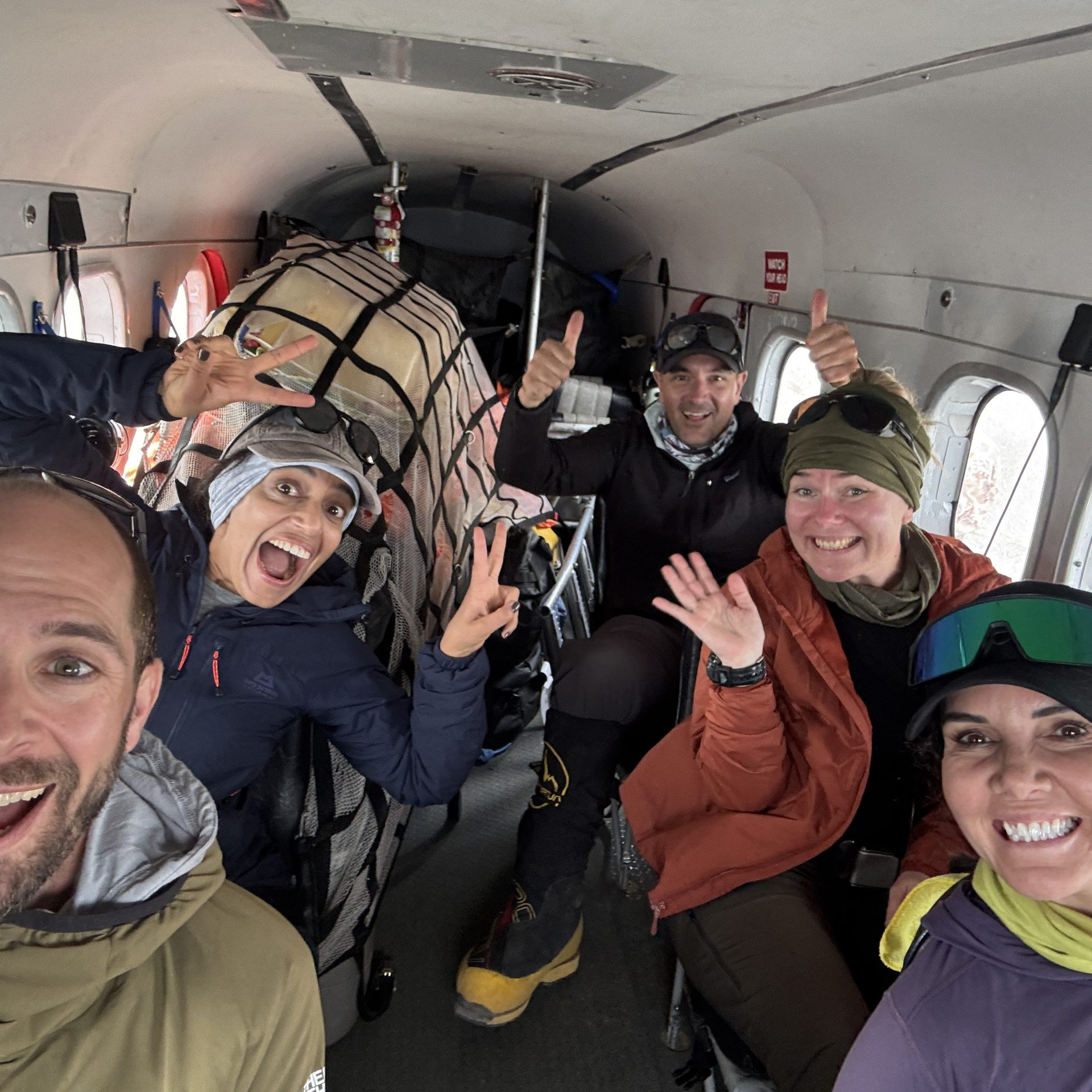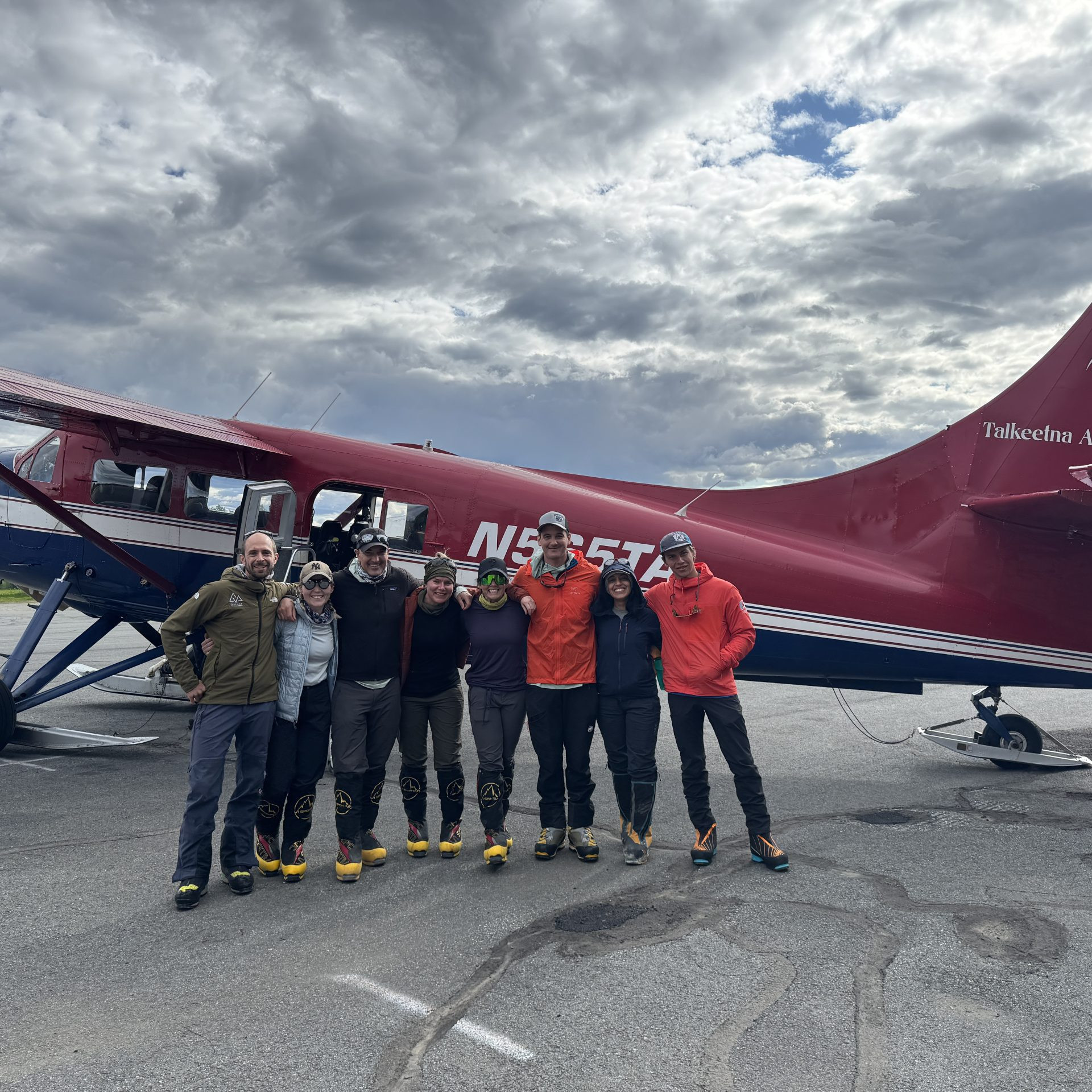Kilimanjaro Summits for our Team Climbers
Kilimanjaro Summits for our Team Climbers
Our Kilimanjaro team climbers stood on top of the Roof of Africa yesterday morning at about 7:30 am local time. We are proud to share that we had 100% of our climbers reach the summit, including our youngest Kilimanjaro summiteer to date, Simon (12 years old), who climbed with his mom, Kristin. A massive kudos goes out to the entire team, including climbers, guides, and support staff.
Congratulations to:
- Michael D.
- Georgie D.
- Madhur K.
- Richa K.
- Kristin S.
- Simon S.
- CTSS Senior Everest Guide Pega Sherpa
- CTSS Tanzanian Lead Guide Mary
- CTSS Tanzanian Assistant Guides Nesto & Magnus
Photos courtesy of Pega Sherpa
Kilimanjaro Team at the Barranco Wall
Kilimanjaro Team at the Barranco Wall
After a day of climbing high and sleeping low, the team is ready to take on the famed Barranco wall today. This section is often referred to as the “Breakfast Wall” and requires a bit of scrambling, using both hands and feet to navigate the trail as it winds upward along narrow ledges and natural steps carved into the rock. Though it looks imposing from below, the climb is incredibly fun and rewarding, with each pause offering wider and wilder views of the Barranco Valley falling away behind our team.
At the top, climbers are met with a sweeping vista across the Karanga Valley, the Heim Glacier, and deep into the plains of Tanzania below. From here, they will move through the high desert terrain until they reach Karanga Camp (13,123 ft / 4,000 m) this afternoon.
Our Star Guide Pega Sherpa checked in with our team and shared a few of his thoughts on being back on Kilimanjaro.
“The past few days have been nothing short of amazing, exploring the vibrant town of Moshi, hiking to the stunning Materuni Waterfalls, handcrafting local coffee, and starting our journey through the Machame Gate for the Kilimanjaro ascent.
Our team is strong, and the local support crew has been phenomenal every step of the way. Spirits are high, and with just one more day before the summit push, excitement is building. A well-deserved celebration awaits at the top.”
Thank you, Pega, for your leadership on the mountain and for sharing these photos. Tomorrow, our team will move to High Camp in preparation for their summit bid. We wish all of our climbers the best of luck on their continued ascent to the Roof of Africa.
Baker and Kilimanjaro Teams on the Move
Baker and Kilimanjaro Teams on the Move
Our Baker team has safely arrived in Sedro-Woolley, and after gear checks and a guide briefing with CTSS guide Dallas Glass, they are now en route to their base camp for the next 5 days at Squak Glacier. They should arrive at camp later today after making the trek from the trailhead.
On the Roof of Africa, Star Guide Pega Sherpa checked in with our team from Shira Camp. The team made good time moving up today and arrived at camp before lunch.
Today, the team got a full taste of the heather moorland zone with panoramic view of Kibo’s snowcap, Mawenzi’s jagged spires, and Mount Meru to the West. Once on the Shira Plateau, an ancient caldera, the views didn’t stop. There, the team took in the open plains and sweeping views of Kibo’s slopes with the outline of the Western Breach (a trekking route that is currently closed) looming in the background.
In the photos below, you can get a sense of the dramatic shifts in the landscape from the lush rainforest to the panoramic moorland.
Kilimanjaro Team Climb Begins
Kilimanjaro Team Climb Begins
Our Kilimanjaro climbers have officially hit the trail! Today, the team left Moshi and, after a quick drive through the cultivation zone, which features lush highlands and roadside markets, they arrived at the Machame Gate (1,800m / 5,905ft), the starting point of their Kilimanjaro ascent.
After passing through the gates, the team will be greeted quickly by their second climate zone, the lush montane rainforest, where a cloak of emerald is alive with birdsong, flashes of monkeys leaping overhead, towering tree ferns, and ancient moss-draped trees.
Continuing upward above 3,000 meters, the team will end their day at the Machame Camp, perched in their third climate zone, the heather moorland. This camp is set on a plateau at the edge of the forest, with sweeping views through the mist and a stream nearby for fresh mountain water.
Here is a peek at Kilimanjaro’s different climate zones, plus an epic team shot from Star Guide Pega Sherpa.
Welcome to Tanzania
Welcome to Tanzania
Our Kilimanjaro team climbers have arrived safely in Tanzania, and they are already getting out and about before they begin their trek up the Machame Route. This team climb is led by Star Guide Pega Shera, who is known for his technical skills, patience, and thoughtfulness while guiding.
Pega brings 7x Everest summits, 2x Cho Oyu summits, and 2x Lhotse summits to the table, which means this expedition is a unique opportunity for our climbers to not only tag one of the Seven Summits but also learn from one of the best guides in the Himalayas. We offer Star Guided expeditions on Kilimanjaro because it’s such a great progress peak, and many climbers go on to have future 6,000m, 7,000m, and 8,000m goals. These rare opportunities are the perfect opportunity to pick the brains of some of the best in the business.
Since arriving, our team has completed their gear guides and a guide briefing with enough time to catch a few cultural highlights. Today, the team did an exclusive tour to the spectacular Materuni Waterfall along the Mware River. After that, they took a tour of a local coffee plantation and participated in the coffee roasting experience.
Tomorrow, the team will head into Kilimanjaro National Park and cross through the Machame Gate to begin their climb.
Thank you to Pega Sherpa for sharing these shots from your waterfall tour.
How to Build Your Mountain Kit Without Breaking the Bank
How to Build Your Mountain Kit Without Breaking the Bank
Building your mountaineering kit should feel exciting, but we know it can also feel overwhelming. With so many options available, it’s all too easy to overspend, under-research, or get swayed by what’s trending online. The good news? With a little strategy and support, you can build a system that fits your body, your goals, and your budget.
Whether you’re gearing up for your first climb or gradually building toward an 8,000-meter dream, here’s how to make smart, lasting decisions about your gear.
Start With Strategy, Not a Shopping Spree
Before clicking “add to cart,” pause and zoom out. What are your climbing goals over the next 1–3 years? Are you just testing the waters on Baker to see if you truly love mountaineering? Or confident you plan to tackle all Seven Summits? Thinking ahead helps you prioritize the right pieces of gear now, so you don’t end up rebuying them later.
Our gear lists are available for each climb on the CTSS website. Don’t be afraid to peek at the Aconcagua or Everest list even when you’re starting with Baker. You’ll start to spot crossover items that are worth the investment upfront: things like sleeping bags, parkas, and packs that’ll serve you well on multiple peaks.
And remember, your CTSS Program Manager is always available to help you plan purchases based on where you’re headed, not just where you are now.
Rent or Buy: What Makes Sense and When
Not everything needs to be bought up front, especially if you’re new to mountaineering or building your kit over time. Renting gear can be a great way to cut costs and avoid overcommitting before you’ve tested what works for you. But not all rental options are created equal.
Gear availability and quality vary widely depending on the destination. Some locations have reliable rental infrastructure with solid options (like Baker or Chamonix), while others—like Punta Arenas or Timika—offer little to nothing. That’s where having the right guidance matters.
We’ve put together a quick-reference Gear Rental Recommendations by Expedition chart to help you decide what to rent, what to bring from home, and when to invest in your own gear.
And if you’re still unsure? Your Program Manager is here to help you navigate it all so you can show up confident and well-equipped, no matter where you’re headed.
Score Smart Deals, Not Sketchy Dupes
There’s no need to pay full price for great gear. If you time it right, seasonal sales can offer serious savings on everything from base layers to big-ticket items like boots, packs, and sleeping bags.
In the US, keep an eye on major sales events like Memorial Day, Labor Day, and Black Friday. REI frequently runs member-exclusive promotions and rotating discounts throughout the year. In Australia, retailers like Bogong Equipment offer annual sales with excellent value on technical gear. And in the EU, shops like Bergfreunde, Au Vieux Campeur (France), and Globetrotter Equipment (Germany) regularly offer seasonal deals.
Wherever you’re based, outdoor retailers tend to align their biggest sales with national holidays, end-of-season transitions, and major shopping weekends, so it’s worth watching your local calendar and signing up for brand newsletters to stay in the loop.
Depending on your job, you might be eligible for pro deals through platforms like ExpertVoice or Outdoor ProLink (primarily US-based), which offer discounted pricing for educators, government workers, healthcare providers, and more. It’s quick to check and often well worth it.
When buying gear online, especially insulated layers or boots, don’t be afraid to order multiple sizes. Many retailers (including REI) have return policies that support this because a proper fit in the mountains simply isn’t optional.
When trying to cut costs, it can be tempting to wait and shop locally in places like Kathmandu. These hubs often feel like gear havens, packed with endless shops and seemingly low prices. But many of those deals are too good to be true.
We’ve seen too many climbers try to build their entire kit with those too good to be true deals, only to end up with counterfeit gear, jackets stitched together with multiple brand logos, crampons of questionable construction, or knockoff boots that fail when it matters most. Remember that authentic gear in these trekking hubs often runs at full retail, with limited sizing and little flexibility for returns or exchanges. Bottom line: don’t confuse a good deal with a questionable one. You’re better off sourcing gear before you travel, from trusted retailers who back their products and offer real support if something doesn’t work out.
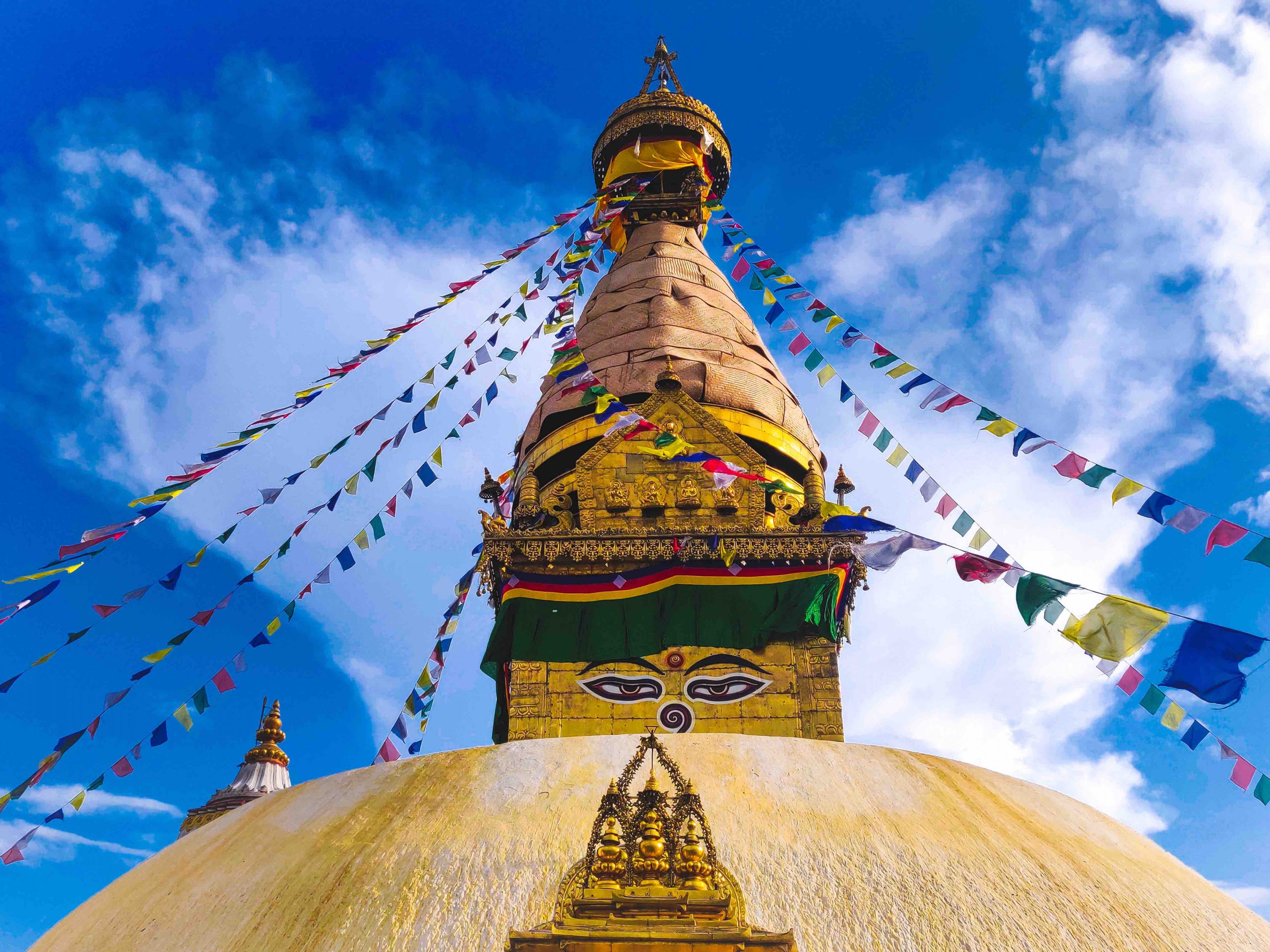
Secondhand Gear: What to Buy and What to Skip
Not every piece of mountaineering gear needs to be brand new. For climbers building their kit over time, buying secondhand can be a smart and budget-friendly way to fill in the gaps, as long as you know what to look for.
Our Climbing Gear – Seven Summits – Buy Sell Swap or the Mountaineers Downunder Facebook groups are great places to pick up gently used gear from other climbers who have just returned from big objectives. Used sleeping bags, crampons, parkas, and packs can be excellent deals, just make sure to inspect them for wear and tear. For safety gear like helmets, harnesses, and ropes, stick to new only.
- Sleeping bags (check for loft and zippers)
- Down or synthetic parkas
- Softshell or hardshell layers
- Climbing packs
- Crampons (check for rust, wear on points)
- Gaiters and gloves
- Base and mid layers
- Helmets (you won’t know their impact history)
- Harnesses (material degrades over time)
- Ropes (age, wear, and storage conditions matter)
- Carabiners (can suffer unseen damage or wear)
- Avalanche gear (probes, beacons, shovels—unless you know and trust the source)
If in doubt, ask. Your Program Manager or a trusted gear shop can help you assess what’s worth picking up pre-loved and what’s worth the full investment.
Buy for Your Body, Not the ‘Gram
Scrolling through social media can be fun inspiration, but it’s not where your gear decisions should come from. Just because your favorite climber is rocking a certain ultralight shell or niche boot brand doesn’t mean it’s the best fit for you or your goals.
The most important part of your kit is that it works for your body, your climate, and your comfort.
What’s trending isn’t always what performs.
CTSS provides detailed Gear Lists for every expedition, built from the real-world experience of our owners and guide team over hundreds of climbs. Each item on the list is something we’ve vetted and believe in—and while you don’t need to buy the exact product we suggest, we encourage you to choose items with similar specs and performance. Our lists are designed to help you dial in a system that works in the field, not just on paper.
Dialing in your system is a process. This is your kit—make sure it fits, functions, and supports your goals. Try things on, return what doesn’t work, and take the time to figure out what truly works for your body and your climb. The better your system, the more energy you can put into the mountain.
CTSS Is Here to Help You Gear Up Smart
Every expedition has its own gear demands, and CTSS is here to help you navigate them. Our guides and Program Managers have real experience with what works, what lasts, and what’s worth the investment.

“I’m always here as your Program Manager and available to hop on a call and chat through that gear with you… We can work together to make sure you’re buying the right gear up front, so a year or two down the road you’re not having to rebuy a bunch of it.”
— Dani Kluberton, CTSS Program Manager and Resident Gear Expert
Whether you’re preparing for your first glacier or aiming for a major summit, we’re here to help you build a system that works for you.
Want to dive deeper into gear selection? Check out our full webinar Mountaineering 101: Expedition gear Essentials on YouTube:
Baker Alpine Academy Summit Success
Our third Mount Baker Alpine Academy of the season wraps up today. After a successful training day at camp on Saturday, the team set their eyes on the summit. We are proud to share that the entire team summited yesterday, August 13th. A massive congratulations to:
- Tom W.
- Kan C.
- Norm F.
- CTSS Guide Dallas Glass
- CTSS Guide Raymond Holt
Guide Dallas reported clear but windy weather on the summit. He also checked in with us upon returning to base camp and indicated that the team did great during their summit bid. Today, the team will be finishing up their training and then preparing for the trek back to the trailhead.
We still have two spots available on our August 6th-10th Alpine Academy. If you want to snag one of these last-minute spots, drop us a message!
Photos from the CTSS Archives
Denali Reflections from CTSS Guide Dallas Glass
Denali Reflections from CTSS Guide Dallas Glass
As our Denali team heads home after spending nearly 3 weeks on North America’s tallest peak, we had a chance to touch base with CTSS Guide Dallas Glass about his experience on the mountain. This year’s weather brought the team strong winds, heavy snowfall, and elevated avalanche conditions that hampered any available summit windows. We know this feeling, and it’s undoubtedly a hard position to be in. However, instead of turning their situation into frustrations, this team grew together as friends, and their admiration for The Great One also flourished.
Below are Dallas’ thoughts, plus a few photos of the team.
“It is impossible to head into the Alaska Range and come away unchanged. Every expedition has a lesson; a way for you to grow, learn, and develop. Not just as a mountaineer but as a person.
We spent twenty-one days in this land of rock and ice. Fourteen of those were at one camp (14,000ft). Yet, despite unending patience and every last effort to capitalize on a brief period of good weather, the summit wasn’t to be.
Even still, this felt like one of my most successful expeditions in my career. Daily, my team showed me the true nature of climbing, being present in the moment.
Despite the monotony of waking up in the same camp day after day, each of them managed to stay present. They found little ways to celebrate where they were and who they were with. They made snow angels in the fresh powder, constructed tent platforms for arriving teams, strolled endlessly up and down the center path in camp, and stared mesmerized at the surrounding mountains. Never once did they wish the time away. Never once did they utter discontent. Never once did they misplace their focus on the summit.
When the weather finally broke and we had our chance to climb up high, too much snow had fallen. The risk of avalanches was simply too high. Even still, they didn’t gripe. Instead, they laughed, played, and took photos, marveling in the beauty of Denali.
If every expedition has a lesson, this one surely taught me the value of reveling in where I am rather than wasting my time worrying about where I am not.
A huge thank you to my Denali 2025 team for loving every second of our trip despite the extended stay at 14 camp.”
– Dallas Glass, CTSS Mountain Guide
